
DISASTER RISK MANAGEMENT AND FOOD SECURITY SECTOR
MINISTRY OF AGRICULTURE
DISASTER RISK MANAGEMENT
STRATEGIC PROGRAMME
AND
INVESTMENT FRAMEWORK
1|P a ge

A. Executive Summary
Ethiopia unveiled the Growth and Transformational Plan (GTP) which sets the vision for the country as a
middle income, democratic and developmental state and a carbon neutral climate resilient economy by 2025.
As aggressive goals of broad based economic growth and social development are envisioned for the country
in the coming five years, a comprehensive Disaster Risk Management (DRM) system is called for to reduce
disaster risk and the impacts of disasters, and to protect development gains. The urgency behind this
approach is conveyed by a host of national policy documents such as the GTP, the Agricultural Sector
Programme and Investment Framework and the Policy on Disaster Risk Management. At the international
level, the Hyogo Framework for Action and the Africa Regional Strategy for Disaster Risk Reduction give
further guidance and thrust.
Ethiopia is exposed to a wide range of hazards associated with the country’s diverse geo -climatic and socio-
economic conditions. Drought and floods represent major challenges, but a number of other hazards affect
communities and livelihoods. These include: frost and hail, crop pests and diseases, livestock diseases, human
diseases, conflict and other manmade hazards, landslides, earthquakes and urban and forest fires. Climate
change is predicted to further increase exposure to climate-related and hydrological hazard. Ethiopia is
vulnerable to this given the importance of agriculture for the overall economy and the livelihoods of poor
households, and the scarce diffusion of irrigation and water-shed management practices.
Much has been done in the last 30 years in the way of managing disaster risks. Large scale programs have
been designed for prevention and mitigation, incorporating a focus on vulnerabilities, household asset
building, and public works for environmental rehabilitation and generation of livelihoods. Preparedness has
been enhanced through the early warning system, the strategic grain reserve, and the development of
standard guidelines for assessment and intervention. Humanitarian response can currently count on an
established risk financing mechanism, better coordination, and improved resource management and
prioritization. A recovery strategic framework guides the community recovery from disasters and the
protection of livelihoods.
Nevertheless, a number of systemic limitations and gaps persist, as identified by the policy on DRM. The DRM
Strategic Programme and Investment Framework (DRM-SPIF) addresses these gaps within the overall goal of
reducing disaster risk and the impact of disasters through the establishment of a comprehensive and
integrated disaster risk management system. The system presented here is designed to bring about positive
outcomes in all the phases of the disaster risk management cycle. Specific priority investment areas are
identified as central to the achievement of the desired outcomes.
The DRM policy provides the direction for the kind of DRM system envisaged for Ethiopia in the future. It
relies on organizational structures with appropriate and harmonized roles and responsibilities at federal,
regional and wereda levels. Horizontal and vertical coordination among decision-making bodies and effective
DRM systems, processes and procedures is ensured.
The system is based on an understanding of disaster risks; on effective and targeted information flows for
decision making and for community DRM; on resources preparedness, ensuring appropriate and timely
availability of key resources; on effective implementation capacity, including resource delivery; and on
mechanisms for learning lessons and feeding into planning and decision-making.
The DRM SPIF envisions a future where, disaster risk is prevented, mitigated and forecast to enable effective
response. A culture of risk reduction is built at all levels. To address identified gaps, an integrated DRM system
encompasses all phases of the DRM cycle using common mechanisms. Programmes in risk reduction
integrate with climate change adaptation (CCA) and disaster risk reduction (DRR) initiatives. Preparedness is
achieved through strengthened early warning and rapid assessment systems linked to contingency plans and
2|P a ge

finance, an improved food and non-food management system, and greater community responsibility for
DRM.
An enabling environment for the implementation of DRM is created through extensive capacity building,
coordination, and international collaborations and engagements programmes. Disaster risk profiles at
wereda level provide extensive data on hazards, vulnerabilities and capacity to cope, which informs
programmes throughout the framework. An overarching information management system ensures the
analysis and compilation of all information generated by the DRM system.
3|P a ge

B. Foreword
Our vision is that of a disaster resilient Ethiopia. The reduction of disaster risk and of the impacts of disasters
are urgent priorities which contribute to the path of economic and social development set forth for Ethiopia
by the Growth and Transformation Plan (GTP).
To best support the enactment of the GTP, efforts in the disaster risk management sector need to be sca led
up, ensuring full synchronization and strategic complementary of the numerous initiatives and interventions.
Moreover, maximized, coordinated, and efficient resource utilization should be a cornerstone of all of our
activities. Success in delivering effective disaster risk management will then guarantee a strengthened
resiliency for our communities, substantial reduction in the underlying vulnerabilities and, ultimately, the
sustainability of economic and social development gains.
The Disaster Risk Management Strategic Programme and Investment Framework (DRM SPIF) is the tool that
will enable the DRM sector in Ethiopia to fulfil this important role.
Throughout the years, much effort has gone into the management of disaster risk and many lessons have
been learned: as our understanding improved, systems to ensure risk reduction, efficient response and
rehabilitation have been established and refined. Nevertheless, the creation of a comprehensive system for
managing disaster risk is not complete and a new framework is called for. Starting from recognition of the
potential for DRM in Ethiopia and the strengths of established systems and practices, the DRM SPIF maps the
required programme components of a comprehensive DRM system for Ethiopia. It presents clear investment
options for partners desirous of supporting DRM efforts and designs mechanism for efficient and harmonized
fund allocation and utilization.
The Government of Ethiopia is strongly confident that with the implementation of the present Strategic
Programme and Investment Framework the economic and social development goals of the GTP will be
safeguarded and reinforced and the vision of a disaster resilient Ethiopia realized.
Mitiku Kassa
State Minister
Disaster Risk Management and Food Security Sector,
Ministry of Agriculture
4|P a ge

C. Acknowledgement
The development of the Disaster Risk Management Strategic Programme and Investment Framework (DRM
SPIF) is a testament to the commitment and dedication of the Early Warning and Response Directorate
(EWRD) of the Disaster Risk Management and Food Security Sector (DRMFSS), federal government line
agencies, regional governments, development partners, humanitarian organizations, and civil society
organizations to the effort of operationalizing the new comprehensive DRM approach.
We would like to express our appreciation to the representatives of UN agencies, development organizations,
humanitarian agencies, and civil society organizations involved in the different sub-teams and the integratio n
committee which critically reviewed the work on DRM in the country and developed the content of the DRM-
SPIF. We would also like to thank the organizations and its representatives to the technical committee and
the steering committee which guided the development and finalization of the DRM-SPIF.
We are grateful to the federal government line agencies, regional governments, and donor organizations
which reviewed and provided critical inputs to the DRM-SPIF.
Finally, our deep gratitude to the DRMFSS staff, specifically the Early Warning, Response, and Hazard
Monitoring Case Team and its seconded staff, for its steadfast resolve and leadership in the
conceptualization, development and finalization of this strategic programme and investment framework.
Muluneh Woldemariam
Acting Director
Early Warning and Response Directorate
Disaster Risk Management and Food Security Sector
Ministry of Agriculture
5|P a ge

D. Acronyms
AU
:
BPR
:
CBO
:
CCA
:
COP
:
CSO
:
DCOC
:
DPPB
:
DRM
:
DRMFSS
:
DRMTWG
:
DRR
:
ECA
:
EDRI
:
EFSRA
:
EFY
:
EGTE
:
EIAR
:
ENCU
:
EOC
:
EPA
:
EWRD
:
EWS
:
FMIP
:
FSCD
:
GIS
:
GoE
:
GTP
:
HEA
:
HFA
:
HRD
:
HRF
:
ICPAC
:
ICS
:
IFRC
:
IMS
:
ISDR
:
JOCV
:
JSOC
:
African Union
Business Process Reengineering
Community-Based Organisation
Climate Change Adaptation
Communities of Practice
Civil Society Organisation
Disaster Coordination and Operations Center
Disaster Prevention and Preparedness Bureau
Disaster Risk Management
Disaster Risk Management & Food Security Sector
Disaster Risk Management Technical Working Group
Disaster Risk Reduction
Economic Commission for Africa
Ethiopia Development Research Institute
Emergency Food Security Reserve Administration
Ethiopian Fiscal Year
Ethiopia Grain Trade Enterprise
Ethiopian Institute of Agricultural Research
Emergency Nutrition Coordination Unit
Emergency Operations Center
Ethiopian Environmental Protection Agency
Early Warning and Response Directorate
Early Warning System
Food Management Improvement Project
Food Security Coordination Directorate
Geographic Information System
Government of Ethiopia
Growth and Transformation Plan
Household Economy Approach
Hyogo Framework for Action
Humanitarian Requirement Document
Humanitarian Requirement Fund
IGAD Climate Predictions and Applications Center
Incident Command System
International Federation of Red Cross & Red Crescent Societies
Information Management System
International Strategy for Disaster Reduction
Japan Overseas Cooperation Volunteers
Joint Oversight Committee
6|P a ge

LEAP
LIAS
MAC
MDG
MERET
MoFED
MoU
MoWE
NGO
NIMS
NMA
PASDEP
PSNP
RED&FS
SWG
TOR
UNDAF
VSO
WDRP
:
Livelihood – Early Assessment - Protection
:
Livelihoods Impact Analysis and Seasonality
:
Multi-Agency Coordination
:
Millennium Development Fund
:
Managing Environmental Resources to Enable Transitions to more Sustainable
:
Ministry of Finance and Economic Development
:
Memorandum of Understanding
:
Ministry of Water and Energy
:
Non-Governmental Organisation
:
National Incident Management System
:
National Meteorological Agency
:
Plan for Accelerated and Sustained Development to End Poverty
:
Productive Safety Net Programme
:
Rural Economic Development and Food Security
:
Sector Working Group
:
Terms of Reference
:
UN Development Assistance Framework
:
Voluntary Service Overseas
:
Wereda Disaster Risk Profiling
7|P a ge

Table of Contents
A. Executive Summary........................................................................................................................... 2
B. Foreword ......................................................................................................................................... 4
C. Acknowledgement ............................................................................................................................ 5
D. Acronyms ......................................................................................................................................... 6
1. Introduction ................................................................................................................................... 11
1.1 The Disaster Risk Management Strategic Programme and Investment Framework ........................ 11
1.2 The SPIF Process ...................................................................................................................... 12
2. Background .................................................................................................................................... 12
2.1 Disasters in Ethiopia and core DRM challenges............................................................................ 12
2.2 The Livelihood Context ............................................................................................................. 13
2.3 National Policy Framework ........................................................................................................ 15
2.3.1 Institutional Arrangements and Past Policy Context ................................................................ 15
2.3.2 DRM Policy.......................................................................................................................... 16
2.3.3 Linkages to Other Polices and Strategies ............................................................................... 16
2.4 International Commitments on DRM ........................................................................................ 18
2.5 Analysis of Current DRM Interventions, Gap Analysis and Lessons Learned ................................. 20
2.5.1 Current DRM Interventions ................................................................................................... 20
2.5.2 Gap Analysis and Lessons Learned.......................................................................................... 23
3. Disaster Risk Management Strategic Programme and Investment Framework .................................... 29
3.1 Rationale for Investment........................................................................................................... 29
3.2 DRM Linkages........................................................................................................................... 29
3.3 Disaster Risk Management Principles ........................................................................................ 30
3.4 Goals, Objectives and Outcomes ............................................................................................... 30
3.5 Disaster Risk Management Framework ..................................................................................... 31
3.6 DRM Strategic Programme Areas .............................................................................................. 34
3.7 Disaster Risk Management Investment Framework .................................................................... 37
8|P a ge

3.8 Financial Arrangements ........................................................................................................... 39
3.9 Disaster Risk Management Monitoring and Evaluation............................................................... 40
3.10 Institutional Arrangements for Multi-Stakeholder Coordination ............................................... 44
Annex 1 – Programme Options .............................................................................................................. 46
9|P a ge

Table of Figures
Figure 1.The Most Important Hazard (as perceived by rural households)……………....................................13
Figure 2.Disaster Risk Management Framework (Generic)...........................................................................32
Figure 3. Ethiopia's Disaster Risk Management Framework..........................................................................33
Figure 4. Ethiopia’s Disaster Risk Management System Framework by Category.........................................36
Figure 5. Institutional Arrangement for Coordination………………………………………..........................................45
10 | P a g e

1. Introduction
1.1 The Disaster Risk Management Strategic Programme and Investment Framework
The SPIF provides a strategic framework for the prioritization and planning of investments that will drive
Ethiopia’s Disaster Risk Management system. It is designed to operationalise the DRM policy by identifying
priority investment areas with estimates of the financing needs to be provided by Government and its
development partners. The SPIF is a strategic framework that outlines major areas of investment that can
then be more fully fleshed out with development partners moving forward. In this way, the greatest buy-in
and sense of ownership will be created while clearly following strong government leadership and direction.
The SPIF focuses on the creation of a comprehensive system for managing disaster risk that builds on past
lessons and works to increase cross-sectoral multi-agency integration. The main components of the DRM
system already exist and several of them have made important progress in effectiveness in recent years.
However, the components do not function adequately as an integrated system and this limits overall
effectiveness. This requires scaling up efforts in the disaster risk management sector, further developing
capacity, and ensuring full synchronization and strategic complementary of the numerous initiatives and
interventions. The SPIF envisions a whole-of-Government initiative led by the DRMFSS that reflects the
priorities of the Government and a wide range of stakeholders. The SPIF is fully aligned with the Growth and
Transformation Plan (GTP) which is a successor to the Plan for Accelerated and Sustained Development to
End Poverty (PASDEP) and which realized for the country an average annual growth rate of 11 percent for
the past five years. The GTP sets the vision for the country as a middle income, democratic and
developmental state and a carbon neutral climate resilient economy by 2025.
Setting the enabling environment for sustained development is the shift in the government Disaster Risk
Management (DRM) orientation from crisis management to a multi-sectoral and multi-hazard DRM
approach. The Business Process Reengineering (BPR) was the basis for the redirection and which led to the
formation of the Disaster Risk Management and Food Security Sector (DRMFSS) comprising of the Early
Warning and Response Directorate (EWRD) and the Food Security Coordination Directorate (FSCD). The BPR
also led to the review and revision of the National Policy on Disaster Prevention and Management (1993)
reinforcing the application of the multi sectoral and integrated DRM approach that incorporate aspects of
risk reduction and recovery1.
Recognizing the importance of strategic partnerships to maximize the DRM SPIF results and in line with the
GTP, the Early Warning and Response Directorate (EWRD) and the Food Security Coordination Directorate
(FSCD) will build on existing bilateral and multilateral partnerships and support new strategic alliances within
the context of country ownership and leadership; alignment to government priorities, systems and processes
and harmonization within the wider established Development Partners’ coordination architecture, while also
promoting involvement of Civil Society Organizations(CSOs) and the private sector.
This partnership strategy will take into account the following existing international agreements and practices
as well as national strategic investment frameworks and practices: (i) Paris Declaration on the Aid
Effectiveness; (ii) Rome Declaration on Harmonization; (iii) the Growth and Transformation Plan (iv) the
Agricultural Sector Policy and Investment Framework (PIF) 2010 – 2020 which identifies a number of common
1 The ‘National Policy and Strategy on Disaster Risk Management’ is currently in the draft stage and will come into
effect once legislated and approved by the national parliament. The DRM-SPIF will be updated in line with the policy
once it is approved.
11 | P a g e

strategic objectives and investment platforms namely; (a) achieve universal food security and protect
vulnerable households from natural disasters (PSNP, HABP) and (b) reduce degradation and improve
productivity of natural resources (SLM-ESIF, PSNP, AGP, ELALUDEP) and; (iv) the Climate Resilient Green
Economy (CRGE) and Programme of Adaptation to Climate Change (EPA-CC) which recognizes DRM as a key
tenet towards reducing adverse effects of climate change.
Further strategic linkages will be sought with key government sectors for a well-coordinated results based
implementation of the DRM-SPIF.
It is recognized that further programme development will be required to ensure the DRM-SPIF can be
effectively implemented. This will involve joint work between the DRMFSS and Development Partners which
would take place after the launch of the SPIF. This will lead to the creation of investment programmes,
followed by the development of associated operational manuals.
This approach is designed to further strengthen the DRM SPIF as a strategic guide and basis for results
management and mutual accountability.
1.2 The SPIF Process
The SPIF has been developed through a collaborative process involving a wide range of stakeholders. The
process has been led by the DRMFSS and began with an intensive and thorough internal analysis process that
culminated in the production of the SPIF. The SPIF formulation process has included a review of key policy
and strategic documents, the compilation of data and relevant background information, and consultations
with key partners including Government, development partners, civil society, and private sector partners. A
national consultation workshop was held in May 2012 to discuss the SPIF in detail which was followed by a
series of meetings under the auspices of the SPIF Steering Committee which has key representatives from
DRMFSS, the regions, development partners, and CSOs. A final consultation workshop with the same
constituents was held in May 2013 to discuss final changes to the SPIF.
2. Background
2.1 Disasters in Ethiopia and core DRM challenges
Ethiopia is confronted by a wide range of natural and human-induced hazards. Millions of Ethiopians have
been affected by drought and flood in the last decade. The number of people who suffered from drought
peaked at 14 million in 2003 and, in the period between 2000 and 2007, was never below 1.5 million persons.
The floods of 2006 were the most disastrous affecting about 1.7 million persons.2 Rural households also often
quote frost and hail, crop pests and diseases, livestock disease and conflict as important hazards.3 Human
diseases, landslides, and earthquakes are also often reported by the existing early warning system.
This wide range of hazards is associated with the country’s diverse geo-climatic and socio-economic
conditions. Furthermore, a regular and marked rainfall seasonal pattern compounds food security challenges
2Data on drought and flood affected population is compiled from the Risk Baseline dataset for Ethiopia
3LIU, An Atlas of Ethiopian Livelihoods, 2011
12 | P a g e
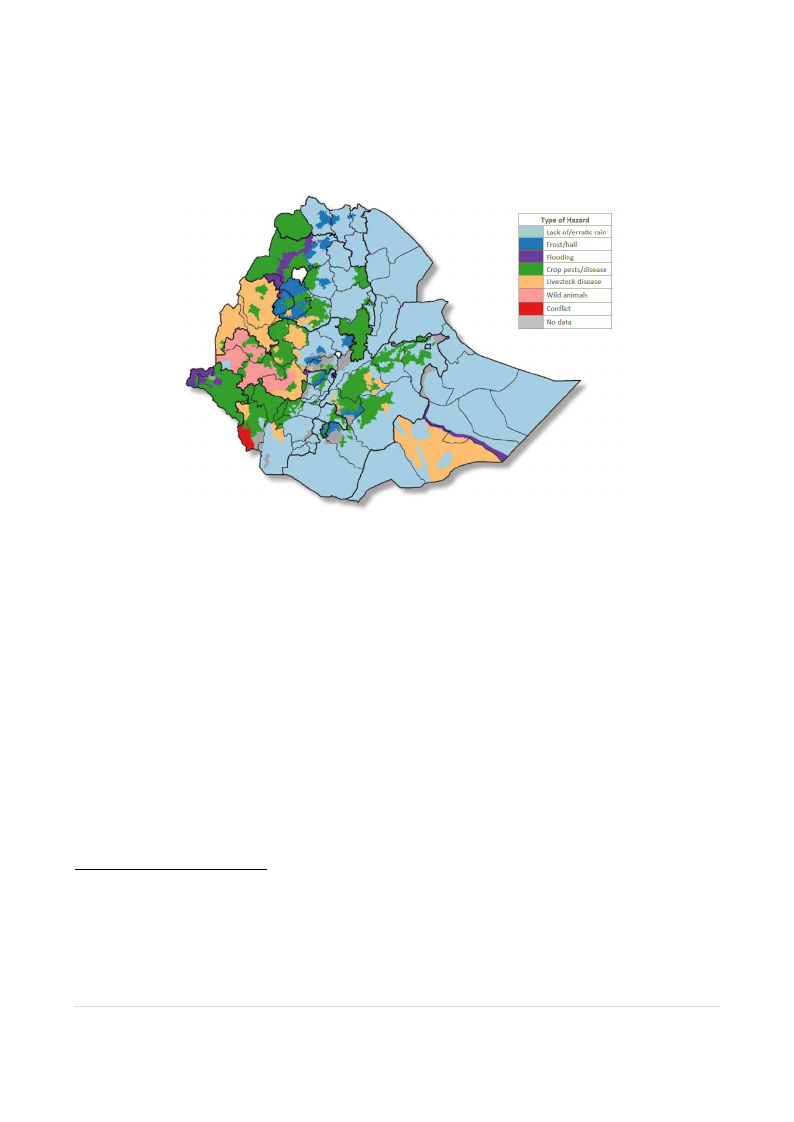
in critical periods of the year: the pre-harvest season in agricultural areas and the end of the dry season for
pastoralists.4
Figure 1: The Most Important Hazard (as perceived by rural households)5
Climate change is predicted to further increase exposure to climate-related and hydrological hazards6 and
the overall economic importance of agriculture, its prominent role in the livelihood of poor households and
the scarce diffusion of irrigation and water-shed management practices make Ethiopia particularly vulnerable
to these. As little as 4 to 5 percent of cultivated land is under irrigation, despite an estimated potential to
increase this up to 30 percent.7 At the same time, small average land holdings and suboptimal yields, as
determined by land degradation and the poor diffusion of agricultural technologies, constraint the incomes
and food security of small-holders even in normal years. About 40 percent of Ethiopia’s small farms have a
size of 0.4 hectares or less and yields on such farms are on average 50 percent lower than on large farms. 8
Finally, human induced hazards include, among others, conflicts as a result of resource competition and other
factors, war, transport accidents and fire (forest and urban). New hazards are also emerging in relation to
the development of new infrastructures such as roads or irrigation canals that can adversely affect local
populations.
2.2. The Livelihood Context
In Ethiopia, there are four main livelihood production systems across over 170 livelihood zones;
4Ibid.
5Ibid.
6World Bank, Economics of adaptation to climate change, 2010
7International Water Management Institute, Irrigation potential in Ethiopia: constraintsand opportunities for enhancing
the system, 2010
8 Alemayehu Seyou Taffesse, Paul Dorosh and Sinafikeh Asrat, Crop production in Ethiopia: Regional patterns andtrends,
March 2011, ESSPII Working paper 0016
13 | P a g e

Cropping: The majority of Ethiopians inhabit highland areas and are primarily dependent on
smallholder mixed farming. This means crops provide the major source of income, but animals for
draught power and as supplementary income. The cropping area of the country includes the actually
very low-lying areas in the far west of the country where rainfall nevertheless favours agriculture, as
well as irrigated areas along the main rivers in Somali Region.
Pastoralism: In the eastern and southern areas of the country, where rain is too low to support crops,
rangeland is used for pastoralism. Pastoralists are primarily reliant on livestock and adopt mobile
grazing patterns to maximize the use of rainfall that is highly variable both temporally and spatially.
Agro-pastoralism: Where areas at slightly higher elevations get more rainfall or where rivers and
seasonal water-courses allow ‘flood-retreat’ cultivation, people do grow crops but mix the risk and
the profit with a major dependence on herding.
Other: In all areas of the country, households with either no livestock for herding or no land for
cropping, exist through a variety of means, including casual labour, petty trading.
These different production systems are also differently affected by Ethiopia’s rainfall patterns, with cropping
communities in the southern parts of the country relying more heavily on the belg rain (March-May) and the
northern and western parts relying more heavily on the Kremt (June-October).
There is some differentiation within Belg dependent communities of the south. Pastoral communities in the
South and East of the country, Gu (April-May) & Deyr (October-November) are the most important rainfall
seasons. Rainfall in January and February (which can be thought of as early belg rainfall) is important in
certain parts of the country. Coastal rains in these months are important for pastoral areas bordering
northern Somalia, Djibouti and Eritrea (heys rains in Somali, dadac in Afar). In SNNPR rainfall in January-
February (the sapia rains) is important for the successful cultivation of belg sweet potatoes.
Many poor households in Ethiopia are net food buyers. In food deficit areas, these rely on food purchases for
50 percent or more of their annual calorie needs.9 The recent volatility of national food markets, as
exemplified by the food price hikes of 2008 and 2011, erodes the purchasing power of wages and livestock
sales and poses a further challenge to the food security of household who rely on labour and livestock income
to ensure their food needs.
Hazards and climatic changes have differential impacts on women and men as gender based differences have
a strong impact on their vulnerabilities as well as the coping capacities. It is well recognized that women and
men experience, perceive and are exposed to different levels of risks and vulnerabilities, with women more
disproportionately affected. In Ethiopia, there is a higher incidence of poverty in female-headed households
as more men are economically active than women (75.1% vs. 63.4%)10 , and due to this prevailing lower
economic and social status, women and female headed households are on average more vulnerable to
disasters. In Ethiopia, only about 34.6% of women are literate11 and lesser proportions of women attend
school after the age of 15 and above12. Women have therefore fewer years of schooling and traditionally
having heavier workloads than men thereby impacting and limiting their access to information, knowledge,
coping skills and capacities towards disaster; they on the other hand perform a significant proportion of
manual farm and housework among other roles and responsibilities at home and in the society and tend to
9LIU, An Atlas of Ethiopian Livelihoods, 2011
10Central Statistics Agency, Population and Housing Census of Ethiopia, 2007.
11Ibid
12ibid
14 | P a g e

be excluded from control of farm income, inheritance of property and decision making processes. Women
and girls also suffer disproportionately from environmental degradation as they have to walk longer distances
to collect water and firewood and sometimes unknowingly get exposed to environmental hazards while
performing their household roles. In as much as women’s vulnerabilities are often highlighted, their positive
contribution, participation and roles in building disaster resilience has not been adequately recognized nor
acknowledged13.
From a DRM perspective, there is great variability across Ethiopia`s diverse livelihood systems that directly
affects the depth of household and community resources available to cope with disaster. It requires a disaster
risk management system that can analyse and respond to different livelihood zones in an optimal manner
including an understanding of the most important hazards and the impact on communities.
Recent strong positive trends in economic and agricultural sector growth and poverty reduction will
undoubtedly moderate some of these underlying vulnerabilities. However, climate shocks and soil
degradation and erosion may reduce the sustainability of further agricultural production growth if no
mitigation measures are instituted. Furthermore, livestock yields will be affected negatively through the
effects of temperature on annual growth, milk and wool production and reproduction; and indirectly through
the changes in the quantity and quality of pasture, forage, grass and disease and increases in parasites.
Because rural households are highly vulnerable to shocks, years of progress in building household assets can
be quickly reversed. Effective disaster risk management is a critical component of the country`s agricultural
growth agenda – without the ability to protect gains in agriculture, overall resilience will not be achievable,
and national GTP objectives will be compromised.
The DRM Policy confirms the significant impact of disasters on the lives of people and on the country’s social,
economic, and political development. Not only do disasters impose serious economic costs for response and
rehabilitation, diverting national priorities and development resources, but they also reverse development
goals and exacerbate poverty.
2.3National Policy Framework
Existing institutional arrangements for Disaster Risk Management in Ethiopia are the result of a long
institutional evolution. This will be explained below. Furthermore, a number of recent, major national
development policies highlight the important role for DRM in future development activities. These will also
be briefly presented.
2.3.1 Institutional Arrangements and Past Policy Context
The first formal governmental disaster management institution was the Relief and Rehabilitation Commissio n
(RRC), established in the wake of the 1973/74 famine with a mandate to provide relief supplies to drought
victims. The Government of Ethiopia reviewed its disaster management strategy and adopted the National
Policy on Disaster Prevention and Management (NPDPM) in 1993. The accompanying policy directive was
issued in 1993 and the policy implementation guidelines were developed in 1995. The major objectives of
the NPDPM were to save lives, integrate relief assistance with development efforts in order to mitigate the
impacts of disasters, and enhance the coping capacities of the affected population through the creation of
assets in the affected areas. The NPDPM guided relief management policies, institutions, and processes
whereby drought disasters were detected and resources, especially food aid, were mobilized and prioritized
for affected areas.
13ISDR, Making disaster risk reduction gender sensitive; policy and practical guidelines.
15 | P a g e

In 1995 the government restructured and renamed the RRC. The Disaster Prevention and Preparedness
Commission (DPPC) was created, with significant changes in mandate particularly giving emphasis to linking
relief to development. Furthermore, since 1993, policy making and oversight responsibilities regarding
disaster management have been vested on the National Disaster Prevention and Preparedness Committee
(NDPPC). Key sector offices such as the Ministries of Agriculture and Rural Development, Health and Water
Resources also became more involved in disaster management since 2003, through the establishment of
emergency sectoral task forces. In 2004, the DPPC was split into the Disaster Prevention and Preparedness
Agency (DPPA) and the Food Security Coordination Bureau (FSCB), with a revised mandate for DPPA to focus
on emergency response while for FSCB to focus on responding to chronic food insecurity.
In 2007 following the BPR, the rights and obligation of the DPPA were transferred by proclamation to the
Ministry of Agriculture and Rural Development (MoARD), which led to the establishment of the Disaster Risk
Management and Food Security Sector (DRMFSS) within the MoARD. This new institutional arrangement
brought a paradigm shift in the approach to disaster management in terms of moving from a drought and
relief focused approach to a more pro-active multi-sectoral and multi-hazard Disaster Risk Management
(DRM) approach.
2.3.2 DRM Policy
The Government of Ethiopia has endorsed a comprehensive DRM policy, based on lessons learned from
previous experience.14These include the necessity of a multi-hazard approach grounded in a deep
understanding of specific disaster risk, and its link to development and vulnerability; emphasis on prevention,
mitigation, preparedness and post-disaster modalities and capacities; de-centralization of resources and
structures; a clear determination of DRM responsibilities, supported by the capacity for legal enforcement
and a high degree of accountability.
The new DRM policy provides the direction for the kind of DRM system envisaged for Ethiopia in the future.
Such system is based on an enabling policy environment and strategy. It relies on organizational structures
with appropriate and harmonized roles and responsibilities at federal, regional and woreda levels. Horizontal
and vertical coordination among decision-making bodies and effective DRM systems, processes and
procedures is ensured.
Furthermore, the system is based on an understanding of disaster risks; on effective and targeted information
flows for decision making and for community DRM; on resources preparedness, ensuring appropriate and
timely availability of key resources; on effective implementation capacity, including resource delivery; and
on mechanisms for learning lessons and feeding into planning and decision-making.
2.3.3 Linkages to Other Polices and Strategies
PASDEP (2005 -2009) and GTP (2010 – 2015)
Recent Government development strategies (PASDEP and GTP) have emphasized the importance of DRM.
PASDEP had the main objectives of ensuring accelerated, sustained and broad based economic development
as well as preparing the ground for full achievement of Ethiopia’s MDG targets by 2015. One of the strategic
pillars to achieve this was managing risk and volatility. Accordingly the government has increased
investments in poverty reduction programs, including food security and other programs.
14Although the policy has yet to be formally approved, preparations are being made for adoption of a DRM approach.
16 | P a g e

The GTP emphasizes the importance of strengthening the Early Warning System and the capacity to respond
to disasters. Ensuring a timely response to disasters will be included as part of agricultural support and
economic development strategies and programs. Preparedness will be improved by increasing food and non-
food reserves. The SPIF will ensure proper complementarity of DRM to the overall growth agenda so that
development gains will be protected from the wide range of risks associated with disasters.
The Agriculture Sector Policy and Investment Framework (PIF)
The PIF stresses that improving the capacity to manage risk with an emphasis on climate change is critical in
overcoming poverty and food insecurity. While the need to increase the rate of graduation of the chronically
food insecure is a key issue, the government must ensure that vulnerable households and communities do
not lose their productive assets due to external shocks, and that other risk management initiatives are
maintained such as early warning systems, strategic food reserves and emergency response capacity. The
DRM-SPIF contributes to further detailing DRM interventions to fully support the PIF and ultimately the GTP
agenda.
Climate Resilient Green Economy (CRGE)
In November 2011 the ‘vision’ to build a Climate-Resilient Green Economy (CRGE) by 2025 was launched. This
economy would be middle-income, resilient to the negative impacts of climate change and would be
achieved with no net increase in emissions relative to today. The vision is supported by two strategy
documents: the Green Economy Strategy (completed in 2011) and the Climate Resilience Strategy (to be
launched in 2013 and at Ministerial Steering Committee at time of writing).
There is evidence that climate variability leads to extreme events and causes hazards. Within Ethiopia
extreme climate events are common, particularly droughts and floods. Alongside the evidence of a changing
climate, evidence suggests the incidence of droughts and floods have increased in the last 10 years relative
to the decade before. Therefore, the Climate Resilient Green Economy (CRGE) vision as well as the
accompanying Ethiopia Programme of Adaptation to Climate Change (EPA-CC) acknowledge the role of
disaster risk management policies, strategies, programs and interventions’ in enhancing their goals. This
supports the GTP and the PIF which also both highlight the critical importance of managing risks associated
with climate change in meeting the goals of reducing hunger and building a sustainable food secure country.
EPA has three main areas of priority: international negotiations, climate change mitigation/low carbon
growth and climate change adaptation. The major overlap for the DRM Strategic Framework is on Climate
Change Adaptation, where building resilience to a changing climate is inextricably linked with efforts to
reduce vulnerability to current climate hazards and variability.
The implementation of CRGE vision and DRM SPIF would ideally rely on common assessments and related
data and information on climate-related hazards, risks and vulnerabilities (such as the Wereda Disaster Risk
Profile).
Social Protection Policy (2012)
The new Social Protection policy is under the auspices of the Ministry of Labour and Social Affairs (MOLSA)
and addresses similar issues.15 It introduces a shift from the social welfare approach of the developmental
social welfare policy to a more comprehensive framework leading to coordinated actions to protect citizens
15Federal Democratic Republic of Ethiopia, MOLSA, National Social Protection Policy of Ethiopia, 2012
17 | P a g e

from economic and social deprivation through emergency interventions and targeted cash transfers,
preventive actions designed to avert deprivation or to mitigate the impact of adverse shocks including health
and unemployment insurance, promotive actions that aim to enhance assets and human capital and income
earning capacity, and transformative actions including legal and judicial reforms, budget analysis and policy
evaluations to help the nation better manage social protection. Looking more broadly at the policy context,
Disaster Risk Reduction, Climate Change Adaptation (CCA) and Social Protection all share a common goal –
to manage risks to development from shocks while building resilient communities. However, significant
overlaps exist in terms of conceptual understanding, policies, and programme implementation between
these three conceptual frameworks. The risk is that separate processes and structures will be developed
that will lead to duplication and the inefficient use of scarce resources. There have been important initiatives
to bring these concepts together at the global level (e.g. the Stockholm Plan of Action, 2007) and at the
national level (series of Ethiopian workshops and deliberations). Clearly structured coordination mechanisms
are now required to ensure that a harmonised approach is developed around a common system with clear
roles and responsibilities at each institutional level. The SPIF is consistent with building synergies and
reducing overlap between these frameworks to ensure new funding opportunities are maximized, and
greater overall impact is achieved.
In other policies and strategies, the government of Ethiopia has pointed out the need to concentrate on
reducing, in the long and medium term, vulnerability of regions’ to drought and other natural calamities:
The Food Security Strategy (FSS)16, which emphasizes the need and plans activities to strengthen
emergency response capabilities of the government, such as the early warning system and the quality
of relief distribution;
The Intergovernmental Authority on Development (IGAD) has worked with the GoE to draft a Country
Programming Paper (CPP) entitled “To End Drought Emergencies in the Horn of Africa”. With a focus
on pastoralists, it references the DRM policy in the component on Pastoral Disaster Risk
Management.
The National Women’s Policy and National Action Plan for Gender Equality also form the basis for
mainstreaming gender in DRM17.
2.4 International Commitments on DRM
The Government of Ethiopia is highly committed to operationalizing the recommendations for action coming
from the Hyogo Framework for Action (HFA) and the Africa Regional Strategy for Disaster Risk Reduction.
The HFA serves as the primary international framework on DRM. Its five areas for priority action are:
1. Ensure that disaster risk reduction is a national and a local priority with a strong institutio nal basis
for implementation;
2. Identify, assess and monitor disaster risk and enhance early warning;
3. Use knowledge, innovation and education to build a culture of safety and resilience at all levels;
4. Reduce the underlying risk factors;
5. Strengthen disaster preparedness for effective response at all levels.
16 Federal Democratic Republic of Ethiopia, Ministry of Financeand Economic Development Growth and Transformation
Plan(2010), Policy Matrix, Volume II.
17Ministry of Women’s Affairs
18 | P a g e

The Hyogo Framework for Action also makes an explicit commitment to gender stating that “gender
perspectives should be integrated into all DRM policies, plans and decision making processes, including those
related to risk assessment, early warning, information management, education and training.”
The Stockholm Accord of 2007 stated that disasters and climate change are serious risks to economic
growth and poverty reduction. The agreed priority actions are:
1. Disaster Risk Reduction and climate change adaptation cannot be dealt with in isolation. It requires
common strategies for integrating DRR, climate change adaptation and poverty reduction
strategies.
2. Disaster and climate change risk analysis must be integrated into national planning processes
including the national poverty reduction strategy
3. DRR and climate change adaptation are not sectors but need to be factored into all sectors
4. DRR is an urgent national agenda to reduce poverty and adapt to climate change
The Africa Regional Strategy for DRR is consistent with the HFA and transforms the strategic documents
produced by the joint initiatives of the AU, NEPAD, etc. into detailed actions for policy makers, decision
makers, disaster managers, and development practitioners at sub-regional, national, and community levels.
It points to the limited effectiveness of risk reduction policies and institutional mechanisms for DRR currently
in place in Africa. In particular, it identifies gaps in the following areas: institutional frameworks, risk
identification, knowledge management, governance and emergency response. A strategy is then devised to
address these, revolving around six objectives:
1. Increase political commitment to DRR;
2. Improve identification and assessments of disaster risk;
3. Enhance knowledge management for DRR;
4. Increase public awareness of DRR, including the participation of women, youth and other vulnerable
groups in decision-making in DRR.
5. Improve governance of DRR institutions;
6. Integrate DRR in emergency response management.
There are also a number of international institutions that are relevant to the present framework.
Ethiopia is a member of IGAD, the Intergovernmental Authority on Development. Initially established in 1986
as a body uniting six Horn of Africa governments involved in drought response and management, it has since
then expanded its focus to promote intergovernmental cooperation in the areas of food security and
environmental protection, promotion and maintenance of peace, security and humanitarian affairs, an
economic cooperation and integration. Among its objectives is to achieve regional food security and
encourage and assist efforts of Member States to collectively combat drought and other natural and man-
made disasters and their natural consequences. IGAD also reiterates the importance of integrating gender
and youth in the regional responses through their gender policy and strategy, including disaster risk
management.
Ethiopia is also a priority country for the Global Facility for Disaster Reduction and Recovery (GFDRR), an
international partnership initiative to help developing countries reduce their vulnerability to natural hazards
and adapt to climate change. The GFDRR aims to mainstream DRR measures in development and help
countries achieve financial resilience to disasters.
Finally, Ethiopia participates actively in DRM related African Union initiatives, such as the AU summits and
the AU Technical Committee on DRR.
19 | P a g e

Alignment with HFA and Africa Strategy for DRR
With respect to the HFA, Ethiopia underwent numerous and significant adjustments in its DRM institutional
framework culminating in the conduct of the business process reengineering (BPR) and the current set-up of
the Disaster Risk Management and Food Security Sector (DRMFSS). The restructuring allowed the GoE to
undergo a major shift in its approach from what was a traditional, reactive, ex-post emergency and relief
work to a proactive, ex-ante preparedness and disaster risk reduction approach.
The 1993 National Policy on Disaster Prevention and Management was reviewed and revised leading to the
National Policy and Strategy on Disaster Risk Management that currently serves the basis for the new DRM
approach by government. The new policy provides for the reduction of disaster risks and impacts through a
comprehensive and integrated DRM system under the context of sustainable development. The new policy
also provides for the appropriate mainstreaming of gender issues noting that gender should be adequately
integrated and mainstreamed in DRM planning, implementation, monitoring and evaluation.
With respect to the Africa Regional Strategy for DRR, for each of the six strategic areas of interventions,
Ethiopia has operationalized the major activities articulated in the programme of action of the Africa Regional
Strategy for DRR.
The DRM-SPIF addresses the facilitation of the GoE’s engagement with the partners at regional and global
levels. Reporting on the progress in the promotion and adoption of DRM approaches to the international
community through the AU and NEPAD is not only being highlighted in the DRM-SPIF but the engagement
with a wider DRM network and the use of south-south cooperation to share experience, knowledge, and
resource to further the application of DRM in the country.
2.5. Analysis of Current DRM Interventions, Gap Analysis and Lessons Learned
2.5.1. Current DRM Interventions
Ethiopia’s DRM landscape is composed of a large number of programs and initiatives pertinent to various
phases of the disaster risk management cycle: prevention and mitigation, preparedness, response, recovery
and rehabilitation. In recent years, Ethiopia has made substantial progress in terms of improving,
streamlining and integrating the entire DRM cycle. While many gains haven made, greater levels of
investment are required to ensure DRM is fully operational across the full sectoral and governmental
spectrum.
Preparedness
Considerable progress can be documented in terms of preparedness to disasters. The need for early
responses to both slow and fast-onset disasters has in fact long been recognized as vital to protecting lives
and livelihoods.
Early drought and flood response guidance is currently available. The Government of Ethiopia National
Guidelines on Livestock Relief set out appropriate activities which can be conducted at each stage of the
drought cycle in pastoral areas and programmes with flexible contingency finance been made available to
NGOs via USAID’s Pastoral Livelihoods Initiative and ECHO’s Regional Drought Decision. At the same time,
the Risk Financing initiative of the Productive Safety Net Programme is being tested this year as a way of
scaling up the food response to drought-affected communities. At the national level, drought contingency
plans have been developed and strengthened. For floods, contingency plans are often drafted. This year, the
early convening of the Flood Management Task Force which will compile Regional Flood Contingency Plans
into a national flood contingency plan should enable more coordinated support to flood affected
20 | P a g e

communities. However, there is still a need to ensure that these plans are available earlier in the season in
order to ensure resources will be available as soon as possible.
Whilst the PCDP made effective use of the regional Disaster Early Response Fund, the recent review highlights
the need for locally owned wereda and regional contingency plans to be in place for timely implementation
and cites delays in producing wereda contingency plans and lack of Regional appro val of Regional Disaster
Preparedness Strategy and Investment Plans (DPSIP) as key constraints.
Maintenance of adequate strategic reserves is also key for preparedness. The GTP plans for an expansion in
the capacity and stock of the Ethiopia Strategic Food Reserve Authority (ESFRA). Moreover, the Government
has enabled to construct about ten feed and cold stores in pastoralist areas in Oromia, Somali, SNNP, Afar
and Amhara regions. These are essential to effectively manage livestock related disasters.
Significant investment into the Early Warning and Information Management System has been ongoing over
the past few years. Ethiopia can count on a number of Early Warning Systems (EWS) which is both a strength
and a weakness. The Government’s EWS is one of the oldest in Africa and is characterized by significant
expertise and a vast, de-centralized structure, with EW staff in every wereda. Recently, the EWS was
reviewed, checklists were re-designed and roll-out of the system has been conducted at regional and wereda
levels. The National Meteorological Agency (NMA) also publishes seasonal forecasts and meteorological
bulletins, which help to inform humanitarian and development actors as well as farmers via local radio and
DAs. In addition, the LEAP software also uses geo-spatial and meteorological data in order to provide
information about the likely crop production outcomes and effects on livelihoods. Future work includes
refinement and verification of LEAP outputs against actual data, software expansion to cover pastoral areas
and to predict floods. Finally, a process to conduct regular analysis of food price data from both the CSA and
the EWS has already been established.
Early Warning information is regularly shared through periodical bulletins and to DRM partners’ fora, such as
the DRM Technical Working Group (DRMTWG), so as to inform decision-making.
In addition, a variety of livelihoods and disaster risk information has been collected or is underway. The
Livelihoods Integration Unit has produced Livelihood Zone profiles for the entire country which are analysed
and compiled into the Livelihoods Atlas. In addition, this data is used as a baseline for the LIAS database
which supports calculation of beneficiary numbers.
The Wereda Disaster Risk Profiling (WDRP) programme is in the process of preparing risk profiles for every
wereda in the country, looking at disaster risk from the lens of hazards, vulnerability and capacity, and
intended to inform development/DRR, contingency planning and early warning systems. These profiles form
the basis of all DRM activities in the country.
Information flow and data quality on DRM has been greatly improved with the thrust in risk profiling,
livelihood profiling, and the revamp of the early warning system that is decentralized down to the community
level. The identification, assessment, and monitoring of hazards, vulnerabilities and capacities is supported
by a strong capacity building component and enhanced communication and information exchange amongst
stakeholders.
Building a culture of safety and resilience: the knowledge base on DRM in Ethiopia is slowly being built.
Undergraduate and graduate degree courses and standardized training programmes on DRM have been
established in Bahir Dar University, the programme offering is being enhanced through south-south
cooperation with Asian countries (Philippines and Bangladesh) to address the professionalization and
capacity development challenges of the DRM workforce. Local (community) level trainings and learning on
21 | P a g e

DRM have been initiated through the community DRM approach and the mainstreaming of DRM in the school
curricula and sectoral plans and programs is going to commence under the DRM-SPIF
Prevention and Mitigation
The prevention and mitigation of disasters in an active area of engagement in Ethiopia, as it is supported by
clear humanitarian and developmental rationales. On one hand, prevention and mitigation reduce the
substantial social and psychological costs of disasters and the economic demands for response and
reconstruction. On the other, when disasters strike, the gains of development activities that did not take into
account an analysis of disaster risk and of the impacts of climate change may be eroded.
Programs in this area include large-scale engagements and a high number of smaller programs. Among the
large-scale interventions, the Productive Safety Net (PSNP) program tackles chronic food insecurity through
targeted cash or food for work assistance to vulnerable households in hunger season months. It is
complemented by a household-asset building component and by contingency and risk financing options to
scale up assistance when disasters strike. The Managing Environmental Resources to Enable Transition to
Sustainable Livelihoods (MERET) programme also targets the chronically food insecure through food for work
assistance. Public works under MERET focus on environmental rehabilitation and livelihood generation
initiatives. In the arid and semi-arid pastoralist areas, the Pastoral Community Development Programme
(PCDP) works to establish effective models of public service delivery, investment and disaster risk
management and to increase the resilience of pastoral communities to external shocks. More broadly, a
wider range of more development orientated programmes that work to address the root causes of
vulnerability can be classified under this category. This leads to the need to encourage greater coordination
and integration of similar activities that seek to reduce overall household and community level vulnerability
to disasters.
Humanitarian Response
As mentioned above, the main fundraising mechanism for humanitarian response is the HRD. This is a joint
government-partners’ document which reflects the findings of the seasonal assessment teams. Livelihood
profiles based on the Household Economy Approach are used to estimate the number of people requiring
food assistance following a shock. Food is distributed through the Government food distribution
mechanisms, the WFP Hubs and Spokes for Somali region and Joint Emergency Operation Plan (JEOP), while
the bulk of funds in the non-food sectors are provided in form of grants to NGOs from the Humanitarian
Response Fund (HRF), USAID, OFDA and ECHO (EC).
The Government has recently adopted elements of the National Incident Management System (NIMS) in
order to improve its capacity to deliver fast and effective humanitarian response.
Where the resources available are inadequate for the needs, the ‘Hotspot’ classification is currently used to
prioritize the areas which most urgently need assistance. This uses a range of indicators and a consensus –
based decision making process to identify the hotspot weredas. The Prioritization Committee, led by
DRMFSS, is multi-agency forum responsible to review the national relief food pipelines against the total
requirement of relief beneficiaries to allocate food resources. In the last three years, it has enabled efficient
utilization of scarce resources. The Food Management Task Force, a forum which coordinates all food
management activities, has also been one of the effective all-partners’ forums which is in place at federal
level. Information is shared, problems and challenges are identified, and actions are taken among partners.
Further coordination and essential guidance on response is provided by the sectoral task forces. The
Agricultural task force La Nina Road Map and the Emergency Nutrition Coordination Unit (ENCU)’s efforts to
improve monitoring and evaluation of nutrition, to develop guidance for Moderate Acute Malnutrition and
22 | P a g e

to align the implementation of future nutrition interventions with the food security and livelihoods
interventions as part of the DRM approach are examples of good practice18. Such initiatives need to be
strengthened across the sectoral task forces.
Recovery and Rehabilitation
Recovery and rehabilitation is defined in Hyogo as reducing the underlying factors and if paramount to long
term risk management post-disaster, and form a continuum with prevention activities. As noted above, DRR
initiatives are closely linked with the poverty reduction, food security, and sustainable land management
initiatives at all levels. Interventions intended to reduce vulnerability must be integrated with initiatives to
improve poor people access to food and other essential services in chronically food insecure areas as is
demonstrated through the plan to utilize the DRM SPIF to enhance planning and implementation of public
works through the Productive Safety Net Programme (PSNP). A risk financing mechanism has also been
established to ensure the protection of lives and livelihoods from shocks impacting on communities and this
should be expanded to manage a wider range of disaster risks and non PSNP areas. The other sectoral line
ministries have responsibility for development activities which in many cases contribute to the reduction of
disaster risk, such as natural resource management, agricultural extension services, water infrastructure
development and health and education services. These line ministries are often unaware of DRM principles
and rarely use risk analysis to aid their planning.
Significant capacity is being built in the climate change sector. The development of climate change adaptation
(CCA) plans at sectoral and regional level is underway. Many aspects of this process, such as the explicit
consideration of vulnerability to climate related risks overlap with the DRM mainstreaming process. A gap
exists in terms of seizing opportunities for collaboration across the mainstreaming of DRM and CCA agendas.
Urban risks are increasingly becoming a concern due to increasing exposure to hazards and vulnerabilities in
urbanized and rapidly urbanizing areas. The DRM-SPIF will ensure that land use plans and building codes are
risk sensitive and take into account the different resource use patterns of women and men.
Institutional capacity: a dedicated government agency- the Disaster Risk Management and Food Security
Sector- has been created. The Early Warning and Response Directorate of the DRMFSS has responsibility for
most elements of the DRM process, including risk analysis (via the LIU and WDRP), preparedness and early
warning and assessment and response. The Food Security Directorate of the DRMFSS manages the food
delivery and monitoring aspects of the Productive Safety Net and Household Asset Building Programmes. At
regional and wereda level, the institutional arrangements vary, but in most cases the same functions are
managed by Disaster Prevention and Food Security Bureaus or Early Warning and Food Security Bureaus.
2.5.2 Gap Analysis and Lessons Learned
The DRM system in Ethiopia has been evolving rapidly over recent years with substantial progress made in
building the overall system envisioned in the DRM policy. This provides a dynamic base upon which to build
future improvements to the system. In identifying the way forward, the SPIF includes an analysis of the gaps
that need to be addressed and lessons learned.
2.5.2.1. Systems Level - Gap Analysis
18The Emergency Nutrition Coordination Unit of Ethiopia roles, responsibilities and achievements, Isaack B. Manyama,
Gugsa Abate and Mathewos Tamiru, Field Exchange, 2011.
23 | P a g e

In the past, DRM has been implemented in a fragmented manner using separate instruments, processes and
institutions without the integration required to effectively manage disasters and contribute to overall GTP
goals. With the new approach comes the challenge of defining the DRM cycle and the establishment of its
interrelationship with the more developed disaster response mechanisms. The need for a strategic
framework becomes imperative as the uncoordinated and unguided implementation of DRM initiatives risks
not only the duplication of efforts and resources but could render Ethiopia’s DRM system confusing.
The lack of sector-wide linkages and synergies is evident in the emerging overlap between DRM, climate
change adaptation and social protection. Both DRM and CRGE have a cross-cutting mandate that requires
integration with other ministries. But If DRM and CRGE units are created independently in key line ministries
and at regional or wereda level (as is outlined in both the DRM policy and the CRGE Vision statement), there
is a risk of significant duplication in developing strategies and investment plans for DRM and Climate
Resilience. The key is to avoid duplication whilst simultaneously maximising the benefits of the information
and technical skills available within both the DRMFSS and the EPA. Cooperation between the DRMFSS and
EPA is required in outlining joint requirements for DRM and CRGE investment plans.
System wide resourcing has traditionally been skewed towards emergency assistance, and food aid in
particular, with not enough investment in building resilient households including protection from shocks. In
the existing system, much of the DRM finance is mobilized for response and through the regular
Humanitarian Requirement Documents (HRDs), which are informed by retrospective assessment of the
agricultural season’s performance. In the future, it is envisaged that needs and required prevention and
mitigation measures can be effectively identified through a joint process of early warning and contingency
planning and that resources can be readily available to implement such measures ahead of forecasted
disasters. A DRM approach aims to balance resources more evenly across the full spectrum of the DRM cycle.
2.5.2.2. Institutional Gap Analysis
DRM responsibility is spread over many institutions using a multiplicity of instruments that are lead to
fragmentation and lost opportunities. The organizational structures themselves do not have harmonized
roles and responsibilities at federal, regional and wereda levels which can lead to duplication of effort in key
functional areas. However, in practice disaster management has been seen as the responsibility of one
institution.
There are systemic capacity limitations (number and quality of staff) and high staff turnover exist at all levels
across the DRM spectrum. This is particularly severe at the wereda level. Quality human resources are scare
which means that duplication of function is particularly wasteful. Capacity limitations include physical office
space, equipment, communications including appropriate technology, and other facilities. (for example,
there is a lack of adequate communication facilities to transmit EW and Risk and Vulnerability Assessment
information).
With the implementation of the DRM-SPIF, it is anticipated that further re-structuring of the EWRD may be
needed to ensure that enough staff are available and appropriately organised to meet the implementation
needs of the DRM approach.
2.5.2.3. DRM Component Gap Analysis
Prevention and Mitigation
24 | P a g e

The responsibility for Prevention and Mitigation is also spread across multiple government and other
agencies which requires strong coordination at the highest levels. One of the central prevention and
mitigation instruments is PSNP which, while integrating some of the DRR cycle components, is still treated as
a programme rather than as part of an overall system for DRM. Moving forward, it will be essential that the
interface between prevention and mitigation instruments such as the PSNP are clearly defined in relation to
the overall DRM strategy. This will include clear policy level and administrative level clarification.
Preparedness
The system as a whole does not prioritize preparedness which is often equated with pre-positioning relief
supplies by those outside of the DRMFSS. Gaps in preparedness exist in terms of contingency planning, early
warning and the link to response.
Emergency response continues to attract a disproportionate amount of resources at the expense of
addressing the root causes of vulnerability to disasters. While progress has been made to develop new
instruments of response beyond traditional food aid, tools such as the contingency fund and risk financing
need further integration within an overall DRM framework. Despite significant improvements in the
timeliness of response, there are still challenges to increasing responsiveness and responding earlier to
emerging crises.
Contingency Planning
Existing contingency plans are limited in scope and are not yet fully aligned to overall DRR planning which
encompasses the full range of activities throughout the DRR cycle including development planning. They also
do not cover all major hazards and hazard exposed areas. Communities are not fully involved in the
contingency planning process, with a resulting low diffusion of knowledge about agreed prepa redness
measures. A stronger link should be established between the preparedness sector and the financial and
decision-making processes for DRM, in addition to building wider linkages and mainstreaming the approach.
Risk and Vulnerability Assessment, Monitoring and Early Warning
Efforts to strengthen the early warning and information management capacity of the Early Warning and
Response Directorate are already underway. Whilst data collection has been a strength, the use of this data
in planning and decision making processes still remains weak which has also been a challenge in terms of
providing timely early warning.
One of the biggest challenges is to bring greater coherence into the whole DRM information systems which
is now characterized by a number of information based projects rather than a unified system. Risk
Assessment, monitoring and early warning products (WDRP, LIAS, and the EWS) are not fully harmonized
within one system which reduces efficiency, can lead to duplication and risks slowing response. For example,
Risk Assessment tools are not used for guiding early warning which is a lost opportunity.
As pointed out in reviews of existing community level programmes, there is scope for communities to better
engage with the EWS and to creatively use new technology, such as mobile phones, to establish early alert
mechanisms. The creation of other programmes under the DRM-SPIF in contingency planning, DRR and
community adaptation and risk reduction planning aim to remedy this as well as improvements in the
development of information products which are more suitable for use.
The DRM-SPIF recognizes the need to enhance the linkage between Early Warning and early action and puts
in place measures to do this. In addition, greater disaggregation of early warning data and guidance for
gender-sensitive responses are areas where the DRM-SPIF should play a role.
25 | P a g e

Research, Mainstreaming and Communication: there are some efforts underway in research, but this will
be further strengthened. The DRM-SPIF aims to improve the body of evidence available to all sectors and to
effectively communicate this for DRM programming. Current support to academic institutions with DRM
research programmes such as Bahir Dar University will continue and be linked with investment in
international institutions and to the agricultural research system.
Building a culture of safety and resilience: the knowledge base on DRM in Ethiopia remains low and requires
enhancement.
Response Financing
Main challenges of the sector include rapid mobilization of resources, availability of funding before disasters
for mitigation and preparedness, the determination of non-food needs and the link with development efforts.
Also, the work of the sectoral task forces has to date been mostly response-focused, whereas an expansion
of their activities into the pre and post disaster phase is called for.
The possibility of involving private sector insurers in response financing has been tested in Ethiopia. An
experiment with this was carried out at the onset of the PSNP programme and then abandoned. In addition,
the HARITA project pilot enables PSNP beneficiaries to work additional days in exchange for weather-index
crop insurance. A review of recent experiences with index insurance programmes19 around the world
(including three pilots in Ethiopia) suggests that that index insurance could not only provide an additional
effective, market-mediated solution to promote agricultural development, but it could also make disaster
relief more effective. With this in mind, the DRM-SPIF recommends that the cost-benefit case for different
insurance models be further explored.
Recovery and Rehabilitation
More gaps exist in terms of recovery and rehabilitation. Currently, the primary focus of the assessment
process and the Humanitarian Requirements Document is on response and there are no standard
methodologies in practice to assess recovery needs or to implement recovery activities, with the exception
of the Government of Ethiopia National Guidelines on Livestock Relief Emergencies, which contains guidance
on activities for the early response and recovery phase of drought emergencies. The widespread and
fragmented responsibility for recovery and rehabilitation across multiple agencies is complicated as it is both
internal and external to government. It is in this area that policy mandate overlaps could lead to confusion
and duplication of effort, especially between DRM, climate change, and social protection. However, strong
mechanism and incentives for collaboration are not fully developed to build adequate synergies and avoid
duplication.
The DRM-SPIF aims to provide a framework for designing appropriate context-specific activities for recovery
in different areas of the country, which will draw on the data available on appropriate livelihood strategies
in particular areas. It is an opportunity to help build the synergies with other actors required to help reach
the overall goals of the GTP.
2.4.3.5. Lessons Learned
The DRM SPIF was developed based on lessons learned from previous experience. These include the
necessity of a multi-hazard approach grounded in a deep understanding of specific disaster risk, and its link
19International Fund for Agricultural Development and World Food Programme. 2010. Potential for scale and
sustainability in weather index insurance for agriculture and rural livelihoods, by P. Hazell, J. Anderson, N. Balzer, A.
Hastrup Clemmensen, U. Hess and F. Rispoli. Rome.
26 | P a g e

to development and vulnerability; emphasis on prevention, mitigation, preparedness and post-disaster
modalities and capacities; de-centralization of resources and structures; a clear determination of DRM
responsibilities, supported by the capacity for legal enforcement and a high degree of accountability. Lessons
have been learned from the Drought Cycle Management approach developed in East Africa which
emphasizes the linkages between mitigation, preparedness, relief assistance and reconstruction and a special
emphasis on pastoral areas.
An important international lesson from the Hyogo process that reflects the Ethiopian experience is the need
to ensure DRM is integrated into the response architecture across government and should not be the sole
responsibility of any one ministry. DRM requires both horizontal and vertical integration to address the gaps
noted above.20
Other lessons to emerge include the importance of community-based approaches. The PCDP review points
to the value of the community-driven development approaches and the capacity of the community to
effectively plan and implement community development interventions with proper fund management. In
addition, there are numerous examples of smaller-scale NGO programmes which have taken a community-
based planning approaches to reduce the risk of disasters.21 These examples show the importance of
community involvement in analysing risk and planning, incorporating gender sensitive strategies into analysis
and plans, and the potential to mobilize community capacities for DRM and natural resource management
activities. In addition, the experiences of CARE in piloting the Community Scorecard Approach22 to enable
greater linkage between community priorities and local government service provision could also be applied
to the DRM sector to strengthen the implementation of DRR programmes.
The DRMFSS Working Group on gender mainstreaming recognizes that gender is not an “add on” but rather
an essential component to effective risk mitigation. It has proposed a number of initiatives moving forward
including mainstreaming (ensuring gender is incorporated in all policies, strategies and work plans),
coordination (developing synergies with various programmes) and monitoring and evaluation (monitoring
how gender sensitive the DRM system becomes).
Experience within Ethiopia points to the necessity to include biological and natural resource management
measures alongside physical infrastructure development. Watershed management approaches seem
particularly effective. A recent PSNP evaluation23, for example, reported clear benefits to communities in
areas where environmental transformation measures have been implemented.
Furthermore, the Agriculture Sector Programme Investment Framework (PIF) indicates the high exposure and
vulnerability to climatic risks amongst some households, particularly in light of the low capacity to store water
and irrigate, and the low level of household savings. The persistence of such vulnerability highlights the
existing gaps in prevention and mitigation efforts and the need for future DRR and climate change adaptation
interventions targeted on these issues.
The integration of DRM concepts within the PSNP process has led to some important lessons. DRM functions
are linked to the PSNP in response terms through the Risk Financing Mechanisms and the Contingency Fund,
and the PSNP responds to DRMFSS assessments, Risk Assessment work and early warning reports. However,
20 UNISDR. 1994. Review of the Yokohama Strategy and Plan of Action for a Safer World (A/CONF.206/L.1)
21 CORDAID and JEDCCO in Dire Dawa, FARM-Africa in South Omo, Save the Children US in Borena, Tearfund in Wolaitta
Zone, Oxfam Canada and SEDA in East Showa Zone. See: Documenting NGO Experiences in DRM: Best Practices from the
NGO Community in Ethiopia, 2011 (under finalisation).
22The Community Scorecard in Ethiopia Process, successes, challenges and lessons, CARE, 2010
23World Bank (2009). Project Appraisal Document on a Proposed Grant in support of the Third Phase of the
Productive Safety Net Programme, 25 September 2009. World Bank Social Pr otection Unit, Africa Region.
27 | P a g e

these linkages are not systematic enough to avoid duplication of efforts, unnecessary operational overlaps,
and the potential of delay in timely response. The PSNP demonstrates that a more integrated and joined up
system is required to ensure that core DRM functions operate within one fluid process to build overall
resilience.
28 | P a g e

3. Disaster Risk Management Strategic Programme and Investment Framework
3.1. Rationale for Investment
Despite significant gains achieved in the past decade, Ethiopia is still vulnerable to the impact of disasters
which impose serious impediments to development, destroy years of effort, squander vast investments and
perpetuate poverty. The vulnerability of the country to disasters is aggravated by rapid population growth,
low agricultural productivity, environmental degradation, and climate change. Ethiopia`s new DRM policy
has been designed to respond to these challenges in conjunction with the national GTP strategy. However ,
the policy cannot be achieved without a sustained and coordinated investment framework that has broad
consensus and support within Government, development partners and other stakeholders. The SPIF
provides a clear statement of the goals and outcomes that the SPIF is expected to influence, and an outline
of the investment parameters required to realize these goals.
3.2. DRM Linkages
DRM is multi-sectoral and involves a whole-of-government approach. It aims to ensure that ongoing
interventions include a DRM component, but also that an integrated system is developed to ensure that poor
communities are able to manage disasters and other risks using common instruments within a joined up
system. While in line with government policy and international standards such as the Paris Declaration, this
is a major challenge in practice given the predominant project based approach which can lead to duplication
and fragmentation.
DRM therefore encompasses a system-wide approach and as such, must clearly demonstrate how to bridge
the current gaps. In practice, this will include building clear external and internal linkages to help address
identified gaps.
External Linkages:
Policy level: Harmonize potential policy overlaps between Climate Change Adaptation/CRGE, Socia l
Protection and DRM and work to jointly mainstream the policies in one process
Institutional level: Develop clear coordination structures and through them elaborate the roles and
responsibilities of each institution which demonstrates the synergy needed to reach common GTP
objectives
Operational level: Develop common implementation systems with the aim to integrate all aspects of the
DRM cycle within a common set of instruments
Internal Linkages:
Information systems: Further harmonize the various DRMFSS approaches and products so that Risk
Assessment, monitoring and Early Warning is one continuum that informs decision making throughout
the DRM cycle
Contingency planning: Link contingency planning much more closely with regular development planning
process and to the response through current and new instruments
Response: Work to harmonize current emergency appeal system with risk financing instruments under
overall DRM framework
Funding modalities: Funding mechanisms along with contingency planning and preparedness are all
system level requirements and must work clearly together. Funding mechanisms must deliver resources
to the point of need in the time frame available for response and thus need to be streamlined and fully
incorporated into the DRM cycle rather than as a separate process. Moves to tools such as risk financing
help address such delays and put ownership and control firmly in government hands.
29 | P a g e

3.3. Disaster Risk Management Principles
The development and implementation of the different programme component of this DRM Strategic Plan
and Investment Framework is guided by the following basic principles:
1. DRM shall be an integral component of national development efforts. Therefore, all development
programs, including post-disaster recovery measures, shall incorporate disaster risk management
components in their regular plans and programs;
2. Natural resource endowments in crisis-affected and crisis-prone areas shall be protected and
promoted in the context of comprehensive risk management strategies;
3. DRM systems shall be decentralized and community-based whereby communities play decisive
roles in the planning, execution, monitoring and evaluation of disaster risk management projects
and programs;
4. DRM systems will ensure the proper participation of all stakeholders including the private sector,
academic and research institutions, humanitarian organizations, etc.;
5. DRM systems will ensure accountability and responsibility of all concerned actors at all levels;
6. No human life shall be lost for want of basic relief assistance in times of disaster;
7. Information management is a vital element of disaster risk reduction, and early warning information
in particular is a right of citizens;
8. DRM systems shall protect and fulfil the basic needs, rights, and dignity of affected populations;
9. Relief interventions shall impartially address the basic needs of all disaster victims, especially at the
initial stages of fast onset emergencies;
10. DRM systems shall take into account the cultural norms, beliefs and practices of communities;
11. Relief efforts shall be followed by development initiatives in order to minimize detrimental effects
such as dependency on relief assistance and promote the recovery of livelihoods;
12. DRM systems will give due attention to especially vulnerable groups such as women, children, the
infirm, people living with HIV/AIDS, the disabled and the elderly;
13. DRM systems shall be free from all forms of malpractice;
14. Sustainable and comprehensive capacity-development is critical for DRM success. This includes the
capacity building of institutions (government, civil societies, and private sector), communities and
individuals on sustainable and continuous manner;
15. Disaster risk management in Ethiopia shall be grounded in a comprehensive and rigorous
understanding of the specific disaster risk affecting the Country;
16. The DRM-SPIF builds on existing institutions and on lessons learnt from the past.
3.4. Goals, Objectives and Outcomes
The DRM strategic programme and investment framework emanates from the BPR exercise and is based on
the objectives, targets, and development goals of the GTP. It is also consistent with the revised DRM Policy
and the priorities enshrined in the Hyogo Framework for Action (HFA).
The Goal of the SPIF is to contribute to Ethiopia’s achievement of middle income status by 2020.
This is a goal that DRM centrally contributes to but cannot achieve on its own. DRM is a fundamental
component of sustainable and equitable economic growth because it protects the development gains made
in all sectors while ensuring the poor can be supported to participate in overall development. This Goal
30 | P a g e

situates the SPIF squarely within the highest national development aspiration and highlights its central
importance in helping to meet this objective.
The Development Objective is to reduce disaster risks and the impacts of disasters through the
establishment of a comprehensive and integrated disaster risk management system.
This means that disaster risk and the overall impact of disasters will be reduced through an efficient,
transparent and effective DRM system, able to provide timely information and resources to the most
vulnerable people where and when needed.
It is anticipated that success in delivering effective disaster risk management will lead to a strengthened
resiliency for communities, substantial reduction in the underlying vulnerabilities and, ultimately, the
sustainability of economic and social development gains.
The Specific Objectives are:
1. Reduce disaster risks and vulnerability that hinder development, primarily by focusing on proactive
measures, establishing a culture of risk reduction in regular development programmes, and
addressing the underlying causes of recurrent disasters;
2. Save lives and protect livelihoods in the event of disasters and ensure the recovery and
rehabilitation of all disaster-affected populations;
3. Promote the resilience of people vulnerable to disasters;
4. Mainstream DRM into all sectors, and ensure DRM is integrated into regular development
programmes and implemented at all levels.
The achievement of these goals and objectives will lead to five specific outcomes:24
1. Disaster risk is prevented and mitigated and a culture of risk reduction is built at all levels
2. Disaster risk is timely forecasted and effective mitigation and response are undertaken
3. Emergency services and public assistance during or immediately after a disaster are provided to save
lives and meet the basic subsistence needs of the people affected
4. Livelihoods and living conditions of disaster affected communities are restored, and improved to
withstand future disasters
5. An enabling environment for the implementation of DRM is created and strengthened
The HFA have established targets for 2015 which coincides with the timeframe of the Government of
Ethiopia’s Growth and Transformational Plan. This DRM Strategic Programme and Investment Framework
also uses as a guiding framework the priority areas of the HFA and transforms the various priority actions
into suggested programme areas in line with each pillar.
3.5Disaster Risk Management Framework
The DRM SPIF is based on the DRM policy which provides the direction for the DRM system envisaged for
Ethiopia in the future. It relies on organizational structures with appropriate and harmonized roles and
responsibilities at federal, regional and wereda levels. The SPIF builds on the DRM policy commitment for
strong horizontal and vertical coordination among decision-making bodies and effective DRM systems,
processes and procedures.
24More detail is presented in the attached DRM SPIF Log frame
31 | P a g e
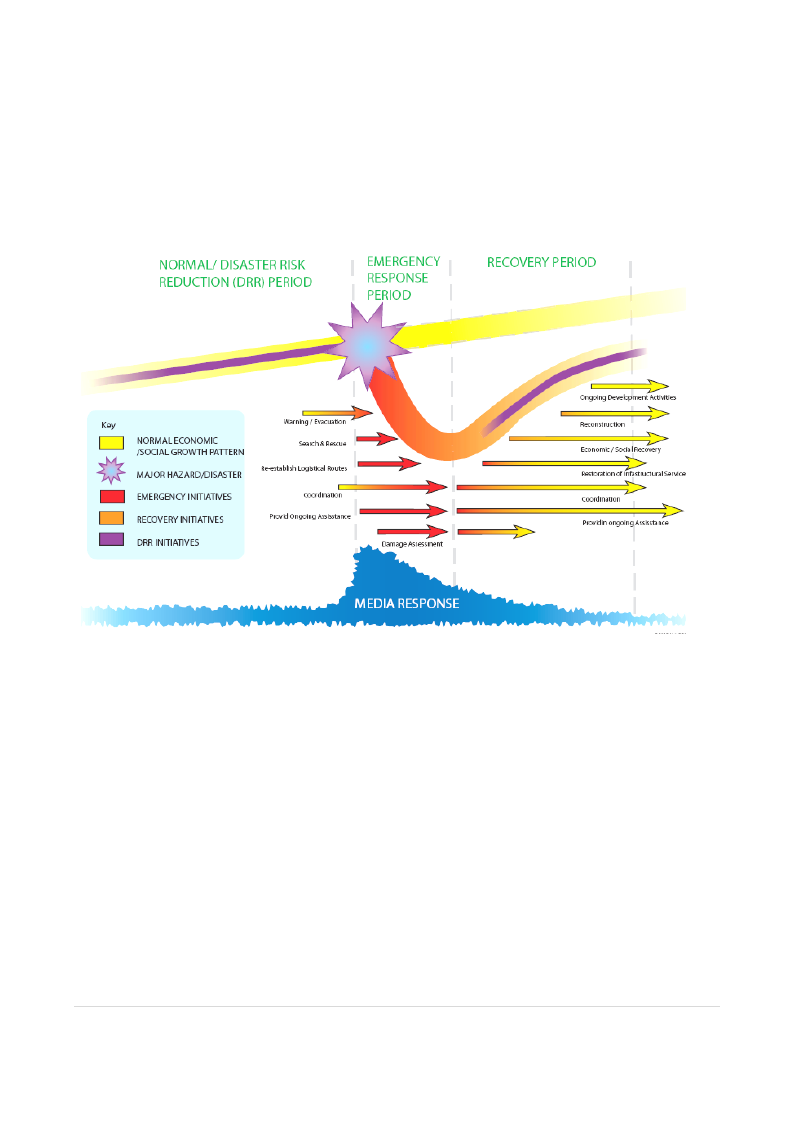
The SPIF is based on an understanding of disaster risks; on effective and targeted information flows for
decision making and for community DRM; on resources preparedness, ensuring appropriate and timely
availability of key resources; on effective implementation capacity, including resource delivery; and on
mechanisms for learning lessons and feeding into planning and decision-making.
Figure 2: Disaster Risk Management Framework (Generic)
The DRM Framework indicated in Figure 1 demonstrates the relationships between hazard risks/disasters
and development and the impact of these hazards/disasters given the level of vulnerability and resilience of
communities. It also emphasizes the need for a holistic approach on DRM as both development and
humanitarian actions are inextricably linked and provide a fluid transition towards the strengthening of
capacities and resilience of households and communities to protect lives and livelihoods. It is critical that
DRM is seen as an integrated system embracing a range of sectors and institutions rather than as a series of
individual activities implemented in silos.
Ethiopia’s DRM system goes further in contextualizing the framework to the conditions in the country. The
DRM system of Ethiopia is divided along seven pillars. Two pillars – prevention and mitigation and
preparedness –constitute the core of disaster risk reduction and are essential to ensuring an early and
effective response. This in turn mitigates the overall impact of the disaster and speeds recovery and
rehabilitation. Institutional strengthening is the pillar which supports an enabling environment for the
integration of these various components along the different phases of DRM. Providing the foundation for the
DRM pillars is monitoring and evaluation and resource mobilization.
32 | P a g e
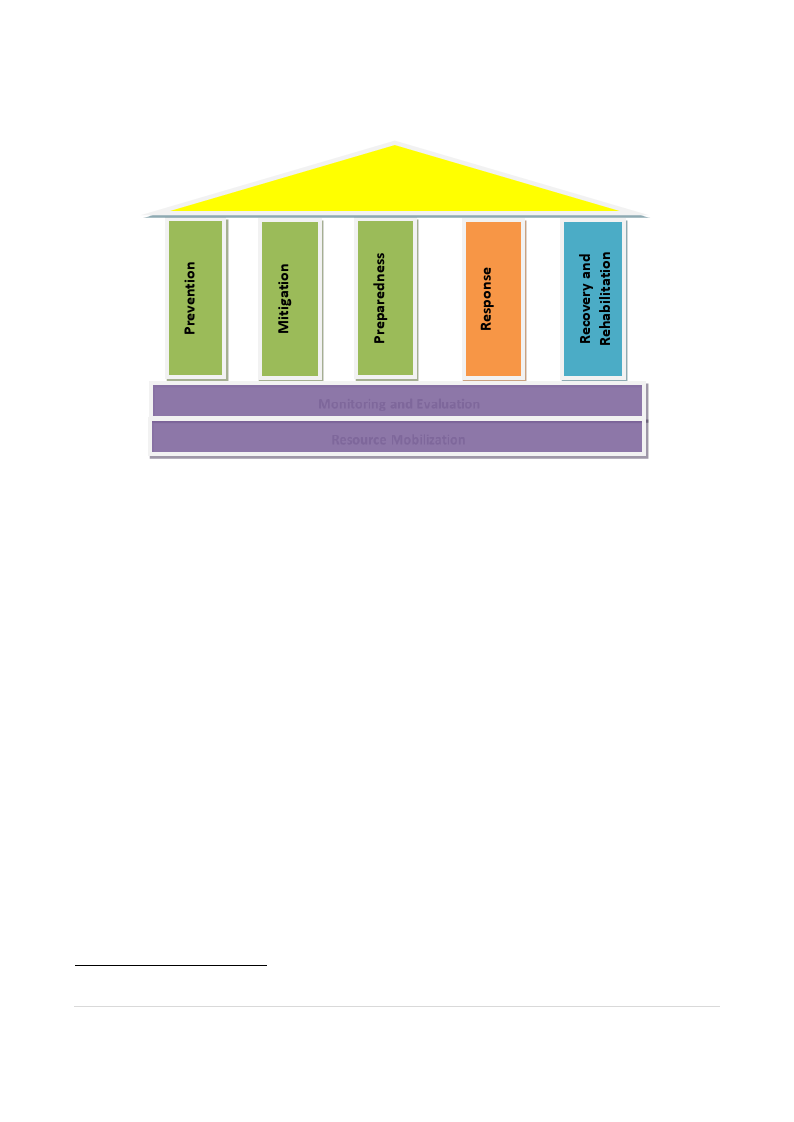
Figure 3: Ethiopia's Disaster Risk Management Framework
Institutional Strengthening
Monitoring and Evaluation
Resource Mobilization
The seven pillars of the DRM Framework interact within a continuous process that guides a transparent and
integrated system through three major phases: pre-disaster, during disaster, and post-disaster.
Pre-disaster Phase: This includes prevention, mitigation and preparedness activities with a focus on
incorporating DRM elements into development strategies, policies and programmes, building the capacity
for all actors to discharge their roles, building adequate physical and financial reserves, and ensuring the
tools for response are in place including contingency planning and a holistic information system that
encompasses early warning, risk assessment, livelihood analysis and monitoring systems.
Disaster Phase: This phase exercises the infrastructure and systems of response with a focus on communities
and weredas as the first line of detection and response. Prior to the disaster, capacity to detect and respond
to disasters will be built from the community level on up. Protocols and procedures of response will be based
on a thorough understanding of household vulnerabilities and risks and innovative tools of response will be
used such as risk financing.
Post-Disaster Phase: This phase manages the transition into development programmes and begins with a
damage assessment as the basis joint early recovery programming. These activities aim to quickly move to
stabilization and the promotion of resilience building activities. Resilience is the ability to withstand threats
or to adapt to new strategies in the face of shocks and crises, in ways that preserve the integrity of individuals,
households and communities (while not deepening their vulnerability) with a focus on merging humanitarian
and development programming to better address overlapping risks and stresses.25 It is an emerging concept
that complements DRR.
25FAO, UNICEF, WFP. A Strategy for Enhancing Resilience in SOMALIA: Brief, July 2012
33 | P a g e

The new approach to DRM is multi-disciplinary and multi-sectoral which requires a wide range of reliable
data generated by the full spectrum of institutions, sectors and decision makers. It must operate within a
timely and efficient communication system that is able to integrate these many diverse parts.
The DRM policy envisions a centrally managed DRM information system that integrates information from
different sectors as well as harmonizing all internal information flows into one system. This would include
all information on hazards and associated risks, vulnerability/livelihoods/coping strategies, and underlying
and associated causes.
3.6 DRM Strategic Programme Areas
During the SPIF formulation process, a number of priority areas for investment have been identified within
the DRM cycle. The DRM-SPIF provides an opportunity for funds to be fed into priority programmes to ensure
a comprehensive and integrated response to the DRM challenges within Ethiopia.
Under the following six investment categories are a number of indicative programme areas that form the
core of the SPIF.26 If new DRM related initiatives are identified outside of, or cutting across the existing
programmatic areas, the DRMFSS will work with partners to formulate solutions within the context of the
DRM SPIF. The DRMFSS will work closely with key stakeholders to develop these options in more detail.
DRM Investment Categories
Priority Programmatic Areas
1. Early Warning, Risk Assessment, and
Monitoring*
* This theme captures all information issues including
knowledge management, communication strategy, research, Risk
Assessment, Early Warning, assessments and M&E
Information management systems support including:
Early warning systems
Disaster risk profiling
Risk Assessment/Livelihoods analysis
Rapid assessment system
Post-disaster needs assessment
DRM research, communication and awareness
raising
M&E strengthening
2. Prevention and Mitigation
DRR programming
CAA/DRR/Social protection integration
3. Preparedness
Contingency planning
Contingency fund
Food and non-food management system
4. Response
Emergency response coordination
Humanitarian response
5. Recovery and Rehabilitation
Post disaster recovery programming
Integrated rehabilitation programming
6. Institutional Strengthening
DRM coordination
International collaboration and engagement
Capacity development
26 These are described in more detail in the Annex
34 | P a g e

DRM mainstreaming
DRM volunteer scheme
Underpinning the DRM policy is an emphasis on a participatory approach that is both decentralized and
community based. The DRM policy commits to establishing DRM systems whereby communities play
decisive roles in the planning, execution, monitoring and evaluation of disaster risk management projects
and programmes. It emphasizes the proper participation of all stakeholders including the private sector,
academic and research institutions, humanitarian organizations, etc. Included is due attention to vulnerable
groups, especially women, children, the infirm, people living with HIV AIDS, the disabled and the elderly.
The importance of gender with the DRM system is recognized within the DRM policy and is reflected in the
formation of a DRM working group on mainstreaming gender in disaster risk management within the RED&FS
coordination structures (see section 3.10). This recognizes the essential role of women in building disaster
resilience through knowledge and responsibilities in resource management, and in mobilizing communities
to prepare for and respond to disasters.
The capacity development of DRM institutions will be based on a comprehensive institutional capacity
assessment. The resource pool on DRM in the country is to be enhanced through the support to academic
and training institutions in offering undergraduate and graduate degree courses and the conduct of
specialized short courses on DRM. A DRM resource centre will anchor the capacity building activities. DRM
will be mainstreamed in all sectors. Paramount in the DRM mainstreaming effort is the establishment of a
strong link with education through the integration of DRM in the school curricula at primary, secondary, and
tertiary levels. Complementing the capacity of DRM institutions is the DRM volunteer scheme which allows
for the establishment of a substantial cadre of volunteer personnel that could be engaged on DRM activities.
Ethiopia’s engagement with the international community on DRM will be enhanced through its heightened
involvement in the activities of ISDR and other DRM communities of practice activities. Of particular emphasis
is the GoE’s focus towards developing south-south collaboration.
At the onset, baselines on the current status of the DRM Programme Components will be established. As per
the DRM Strategic Programme and Investment Framework Monitoring and Evaluation Matrix, a monitoring
database and regular feedback mechanism will be employed complemented by the documentation of good
practices and lesson learned. Evaluations at mid-term and end of term will be undertaken to look into the
effectiveness, efficiency, sustainability, and impact of the DRM Strategic Programme and Investment
Framework.
35 | P a g e
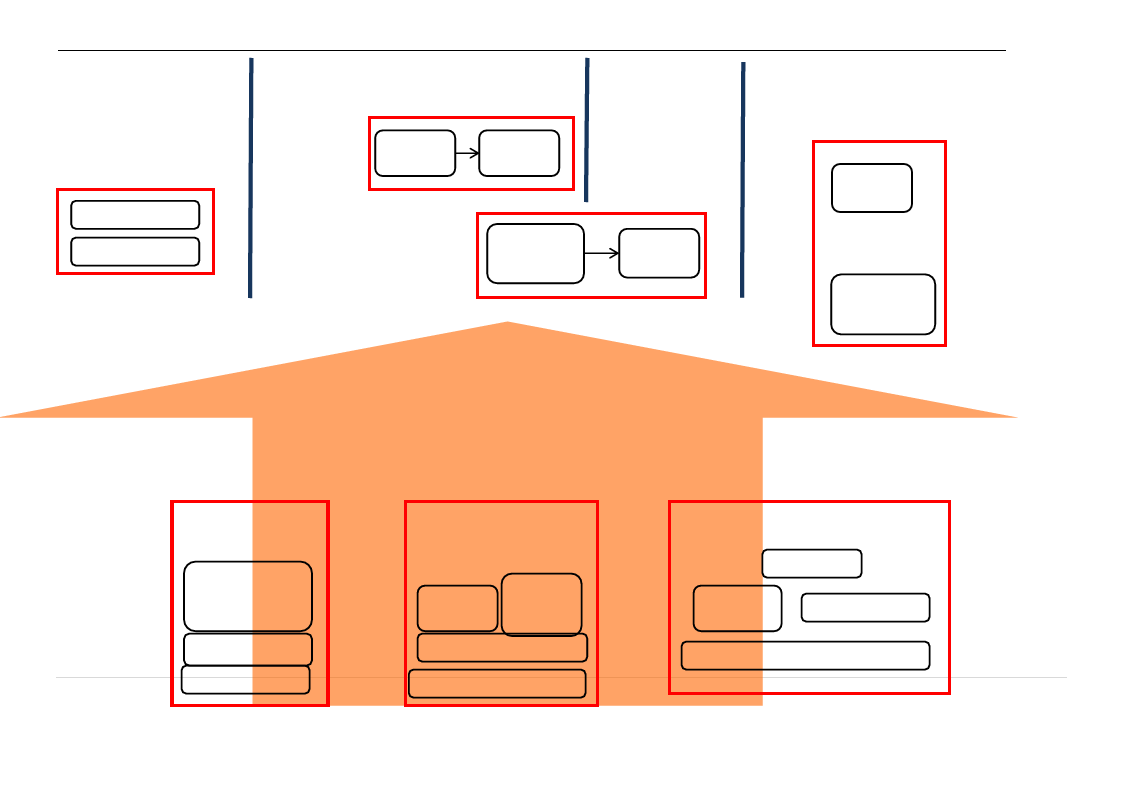
Figure 4 -Ethiopia’s Disaster Risk Management System Framework by Category
Prevention and Mitigation
Preparedness
Response
Recovery and Rehabilitation
Community DRM
DRR Programmes
Contingency
Planning
Contingency
Fund
Food & Non-Food
Management
System
Emergency
Response
Early
Recovery
Damage, Loss &
Rehabilitation
Needs Assessment
Research,
Mainstreaming and
Communication
DRM Research,
Communication &
Awareness Raising
DRM Mainstreaming
CCA/DRR Integration
EW & Information Mgmt
System
Early Warning
System
Rapid
Assessment
System
Disaster Risk Profiles
Information Management System
Institutional Strengthening
DRM Coordination
DRM Volunteer
Scheme
Capacity Development
International Collaborations and Engagement
36 | P a g e

3.7. Disaster Risk Management Investment Framework
The priority pillars and programmes of Ethiopia’s DRM system with its inter-linkages and complementarity
established constitute the overall DRM strategic programme framework. Each of these priority pillars have a
number of programmes that will be further developed with partners to work towards the achievement of strategic
objectives that in turn contribute to the achievement of the DRM goals. Support towards these priority pillars and
programmes is therefore essential.
Development partners are already contributing to DRM in Ethiopia. The DRM SPIF provides an over-arching
framework to accommodate existing investment in priority areas and to highlight areas where additional
investment is required.
37 | P a g e

Matrix 1 DRM Investment Framework
Investment Framework is currently under review and it will be shared soon.
38 | P a g e

3.8 Financial Arrangements
Development partners have expressed intent in aligning and harmonizing support to the forthcoming DRM
Policy and to the GoE’s strategic framework on DRM. One of the options being looked into is developing a
coherent donor position and investment for DRM programmes within an overall strategic framework.
Resources channelled to support DRM initiatives in this manner avoids stand-alone engagements where
benefits are not fully maximized due to the absence of linkages with other DRM initiatives.
It is essential for the success of the DRM SPIF initiatives that appropriate funding mechanisms to support and
sustain the activities are created that allow for maximum flexibility to accommodate all possible funding
streams. There are a number of possible financing modalities to be used for financing the DRM programmes
and activities. Because the funding requirements will be significant, the recommended approach is to align
support with the government system in a harmonised manner.
The envisaged funding mechanisms shall provide financial support to disaster risk management activities
identified in the SPIF. There are a number of options for funding the DRM-SPIF, all of which must ensure
there is adequate Government leadership and ownership.
1. National Budget: The Government will continue to allocate national budget towards the priorities
outlined within the DRM-SPIF.
2. A multi-donor funding facility.
There are a number of options within Ethiopia that could be used for this purpose. Most common is a multi-
donor trust fund mechanism such as the World Bank Trust Fund mechanism used to fund the Agriculture
Growth Programme and the PSNP. Significant synergies could be built by looking to position DRM
investments within existing funding and programming arrangements
Another option is the CRGE financing facility which has been created as a vehicle to contribute to Ethiopia’s
objective of pursuing a climate resilient green economy, which includes an effective DRM system. The
Climate Resilient Green Economy (CRGE) Financing Facility is a national institution, closely linked to the
Environmental Protection Authority, the Prime Minister’s Office and the Ministry of Finance and Economic
Development. There are two financing windows under the CRGE facility, one through MOFED and one
through UNDP.
3. A pooled fund for a specific DRM programme
A pooled fund could support a jointly designed programme that would capture priority elements of the DRM-
SPIF by combining relevant and complementary programme components. It would build on existing
investments in DRM and aim to build linkages with other sectors, with the close involvement of Government
and donors.
The aim of these joint funding approaches is to reduce the transaction cost involved in accommodating
multiple funding streams while simplifying the flow of funds. However, financing modalities must be
sufficiently flexible to maximise funding opportunities while ensuring full alignment with the SPIF.
39 | P a g e

3.9. Disaster Risk Management Monitoring and Evaluation
The M&E function is critical to the SPIF process in terms of guiding implementation, identifying problems and
constraints, documenting results, and ensuring impact is achieved. It is critical for ensuring accountability
and transparency for pooled funds jointly managed, and for building rigour within the waiting system.
The DRM Log frame puts into context the overall results to be achieved in the DRM Strategic Programme and
details how results will be measured and how the information generated will be able to support evidence-
based decision making. The main objective of the DRM Policy is to reduce risks and impact of disaster which
translated into realistically measurable impact indicators would be a) percent reduction in the number of
persons affected by disasters (compared to baseline 2011); and b) percent reduction in disaster losses - lives
and livelihoods lost (compared to baseline 2011) or reduction in the proportion of disaster losses to GDP.
The DRM Log frame makes provisions for ensuring that evidence-based decisions regarding service delivery
are made, resources are effectively and efficiently utilized, and mechanisms for tracking implementation and
determining whether expected results are being achieved is in place. The DRM M&E Matrix provides for the
summary of outcome indicators and critical output indicators that influences the achievement of the
outcome/s.
Monitoring
Monitoring the progress of implementation of the DRM Strategic Framework and Investment Framework is
vested in the DRMFSS and the DRM Technical Working Group (DRMTWG). The DRMFSS will ensure that
information with regards to progress on the implementation of the strategic plan is compiled and discussed
in the DRMTWG. The DRMFSS will develop a database and facilitate regular reporting from various
stakeholders. The DRMTWG will ensure the close monitoring of the progress of DRM funded programmes
and resolve any constraints that may hinder progress in implementation.
Given the scale of programming under the DRM SPIF the indicators are limited in each programme
component. However, monitoring will not be confined to these indicators and will include a comprehensive
documentation of good practice and lesson learned.
Evaluation
Regular evaluations of the DRM Strategic Programme will be conducted to determine its effectiveness,
efficiency, sustainability, and impact. Prior to the conduct of any evaluation exercise, a baseline exercise will
be undertaken to establish the benchmark for the implementation of the DRM SPIF. This will include a mid-
term and end of term evaluation.
In both evaluation exercises, DRM stakeholders (government, donors, UN agencies, and NGOs) will be
extensively involved in the spirit of participation and transparency which characterizes the implementation
of the DRM SPIF. Both evaluations will be conducted under the purview of the DRMTWG with the results
presented and discussed in the said group, as well as, in other bodies of the Rural Economic Development
and Food Security (RED&FS) structure.
40 | P a g e

Matrix 3 - DRM SPIF Logframe
Hierarchy of Objectives
Development Goal
Disaster risks and the impacts of
disasters reduced through the
establishment of a comprehensive
and integrated disaster risk
management system
Objectively
Verifiable Indicators
(OVIs)
Means of
Verification
(MoV)
Assumptions and Risks
The reduction in the number of lives
lost as compared to previous similar
disasters
The reduction in the value of
economic losses incurred as
compared to previous similar
disasters
Annual analysis of weekly EW
reporting on lives lost.
Annual analysis of crop and livestock
losses (disaggregated by major
hazards) from monthly EW
reporting.
CGE analysis of CSA data of patterns
of household expenditure and GDP
in relation to disaster events
(conducted every 5 years).
Sufficient capacity and resources are
available to analyse the data.
There is effective coordination and
collaboration between stakeholders
to arrive at reliable information.
Disaster events are difficult to
compare and validity may be limited.
Outcomes
1. Prevention and Mitigation
A comprehensive national system
for disaster risk reduction and
mitigation is established and
becomes operational by 2020
The reduction in the number of
people and children affected by
severe malnutrition
The number of regions and districts
that refer to the DRM policy and
operational guidelines and that
integrated Early Warning,
Contingency Planning, Mitigation
and Response.
Annual analysis of ENCU data
Assessment of regional and district
reports.
Inventory and assessment of
agreements and approved
development programs, based on
their contribution to the Disaster
DRM Policy and operational
guidelines are available at all
administrative levels.
Staff of government, donors, NGOs
and CBOs are aware of policy and
guidelines.
41 | P a g e

Hierarchy of Objectives
Objectively
Verifiable Indicators
(OVIs)
The number of regions and districts
that access funding, which allows for
planning and implementation of
interventions, to prepare for,
prevent and respond to disaster
events.
Percentage of all development
programs that include elements and
interventions directly contributing to
the Disaster Reduction Objectives, as
described in the national DRM
framework.
Means of
Verification
(MoV)
Reduction Objectives, as described in
the national DRM framework.
M&E and reports of development
programs.
Assumptions and Risks
Sustained commitment of
government, donors and
development partners to finance,
build capacity for and implement
DRR programs and to respond to
disaster events.
All relevant stakeholders and actors
participate in the coordination
structures and follow up the
decisions made and information
disseminated as regards required
action.
2. Preparedness
The national capacity to
effectively anticipate, respond to,
and recover from, the impacts of
likely, imminent or current hazard
events or conditions enhanced
The frequency and effectiveness of
national coordination meetings,
during which early warning
information, derived from all levels,
is assessed to predict the likelihood
of any disaster risks and leads to
timely early contingency action.
Periodic (mid-term and 5 year)
evaluation surveying participating
agencies to identify what decisions
were made based on early warning
information.
3. Response
Emergency services and public
assistance during and/or
The percentage of the amount of
required contingency funding that is
available and directly accessible to
activate contingency plans.
Available funding as compared to
the identified requirements.
Weekly early warning reports and
damage and loss assessments
SPHERE standards are adhered to in
planning and implementing
emergency response interventions.
Adequate and timely resources
allocation from the government and
external sources.
Availability of logistical facilities and
infrastructure to facilitate timely
response.
Allocation of adequate resources for
recovery and rehabilitation from
government and external sources.
42 | P a g e

Hierarchy of Objectives
immediately after a disaster, is
effectively provided to save lives
and meet the basic subsistence
needs of the people affected
4. Recovery and rehabilitation
Livelihoods and living conditions
of disaster-affected communities
restored, and improved to
withstand future disasters.
Objectively
Verifiable Indicators
(OVIs)
The number of lives lost and
livelihoods disrupted amongst the
affected population.
% of relief food dispatch rounds and
non-food responses completed in
line with needs assessments
The volume of distress sales of
livestock linked to major hazards.
Percentage of people affected,
whose livelihoods are restored to
pre-disaster levels.
Percentage of communities whose
assets are either rehabilitated or
improved to pre-disaster levels.
Means of
Verification
(MoV)
Relief food dispatch records and
sectoral task force reports on non-
food responses.
Early Warning data on supply ratings
for livestock.
Comparative analysis of CSA data on
annual household expenditure for
comparable hazard years over time.
Mid-term and final evaluations
surveying the achievements of
recovery programs
Assumptions and Risks
Macro-economic factors (market
access, prices, and infrastructure) do
not hinder recovery efforts.
Management and coordination
mechanisms are established at all
levels
The institutional capacity (staff,
system, structure, physical,
coordination etc.) is adequate to
manage DRM issues in an effective
manner.
Sufficient resources are allocated to
manage and coordinate DRM.
5. Institutional strengthening
Institutional capacity to manage
and coordinate the DRM
interventions and linkages with
other programmes enhanced
Number and proportion of regions
and districts with established DRM
coordination mechanisms (i.e.
DRMTWG).
Minutes of DRM coordination
meetings.
The number of line ministries or
regions reporting an increase in DRR
and/or climate change adaptation
investment.
Institutional capacity assessments
produced as part of the programme.
43 | P a g e

3.10 Institutional Arrangements for Multi-Stakeholder Coordination
Primary responsibility of coordinating and monitoring progress of the DRM Strategic Programme lies with
the DRM Technical Working Group (DRMTWG) which also supports the implementation of the new multi -
sectoral and multi-hazard DRM approach in Ethiopia, besides providing platform for the mutual engagement
and support of humanitarian organizations and development partners.
The DRMTWG also forms link between this DRM coordination structure and the Rural Economic
Development and Food Security - Sector Working Group (RED&FS - SWG), particularly the Joint Strategic
Oversight Committee on DRM (JSOC-DRM).
The DRMTWG continues to work as the nodal coordination forum on all DRM phases – pre-disaster
(prevention, mitigation and preparedness), during disaster (response) and post-disaster (recovery and
rehabilitation). The DRMTWG is supported by a set of technical and sector Task Forces. These task forces are
primarily responsible for the coordination and actions under each sector and are headed by respective
relevant government line ministries and are supported by organisations from other line ministries, UN
agencies and civil society organisations. Cross-cutting to all these is the Working Group on Mainstreaming
Gender in DRM that will work with DRMTWG and all other sector task Forces to mainstream discussions on
vulnerabilities associated with gender and other socially vulnerable groups. Figure 4 below depicts the
complete DRM institutional structure for coordination.
It has been observed that in many of these forums the discussions largely centre on disaster management
issues while risk reduction and recovery aspects get only residual attention. Hence, specific and redirected
emphasis will be paid to mainstream DRR and recovery issues in discussions, activities and decisions of all
these coordination forums. The constituents of these groups will also be reviewed to ensure that all relevant
stakeholders are encouraged to attend and where appropriate the coordinating agencies reflect the
requirements of the group. The ToRs of groups will be revised and monitoring and evaluation indicators
relevant to DRR and Recovery will be included in work plans and reviews. The DRMTWG will be provided
with required technical assistance and support to realise this.
Nevertheless, given the recurrent severity of disasters in Ethiopia, special multi-agency coordination
structures would be activated at the times of crises. This includes both Technical and Strategic Multi-Agency
Coordination (MAC) groups within the framework of National Incident Management System (NIMS). The
NIMS will also facilitate establishing an Emergency Operation Centre (EOC) that will monitor and collate
information from all parts of the country on a regular basis, thus enabling early and smo oth response.
44 | P a g e
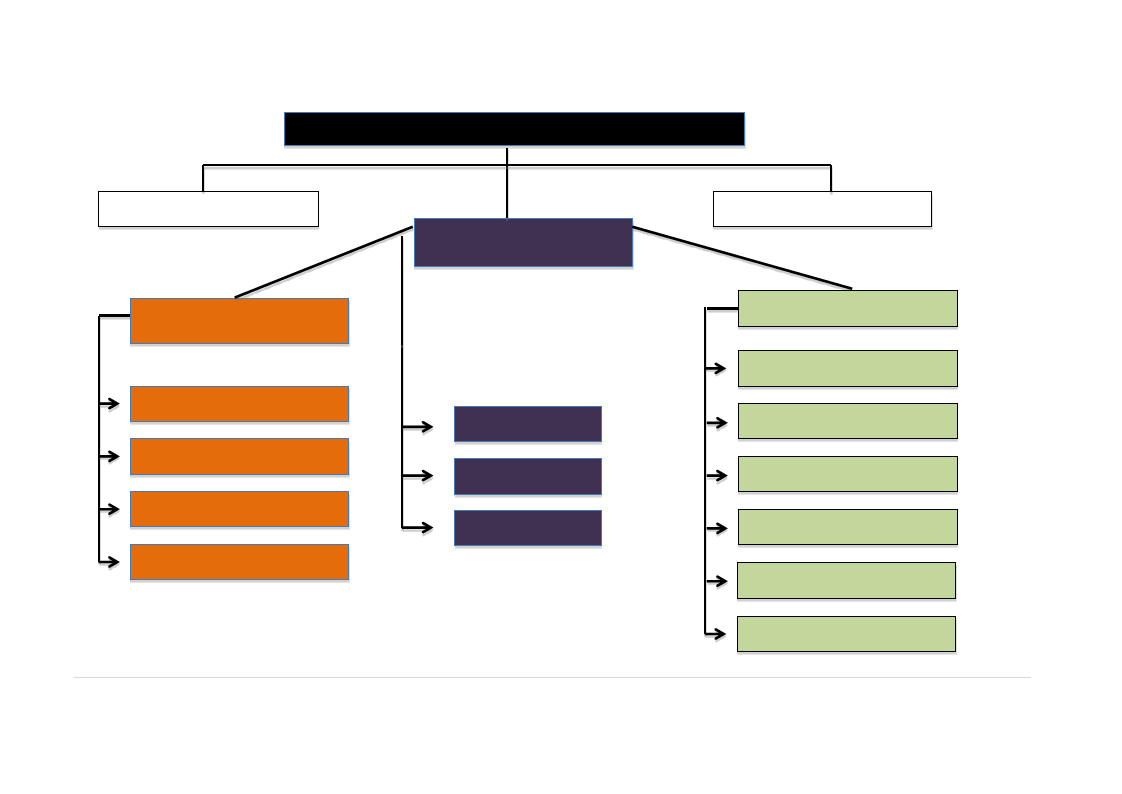
Fig 5: Institutional Arrangement for Coordination
RuralEconomic Development &Food Security (RED&FS) Executive
Committee
RED&FS TechCommittee on SLM
Joint Strategic
OversightCommittee for FS
Joint TC-1-EWR/Transfer
Joint TC-2-HABP
Joint TC-3-PW/CCI
PSNP-RiskFinancing
Management Committee
RED&FS TechCommittee on
DRM&FS
F& NF Mag’t TF
mtfManagement TF
PSNP/RiskFinancing
TC
Social Development
TC
RED&FS TechCommittee on AG
DRM Technical Working Group
AgriculturalTF
EducationTF
HealthTF
MAN TF
WASH TF
Gender TC
45 | P a g e
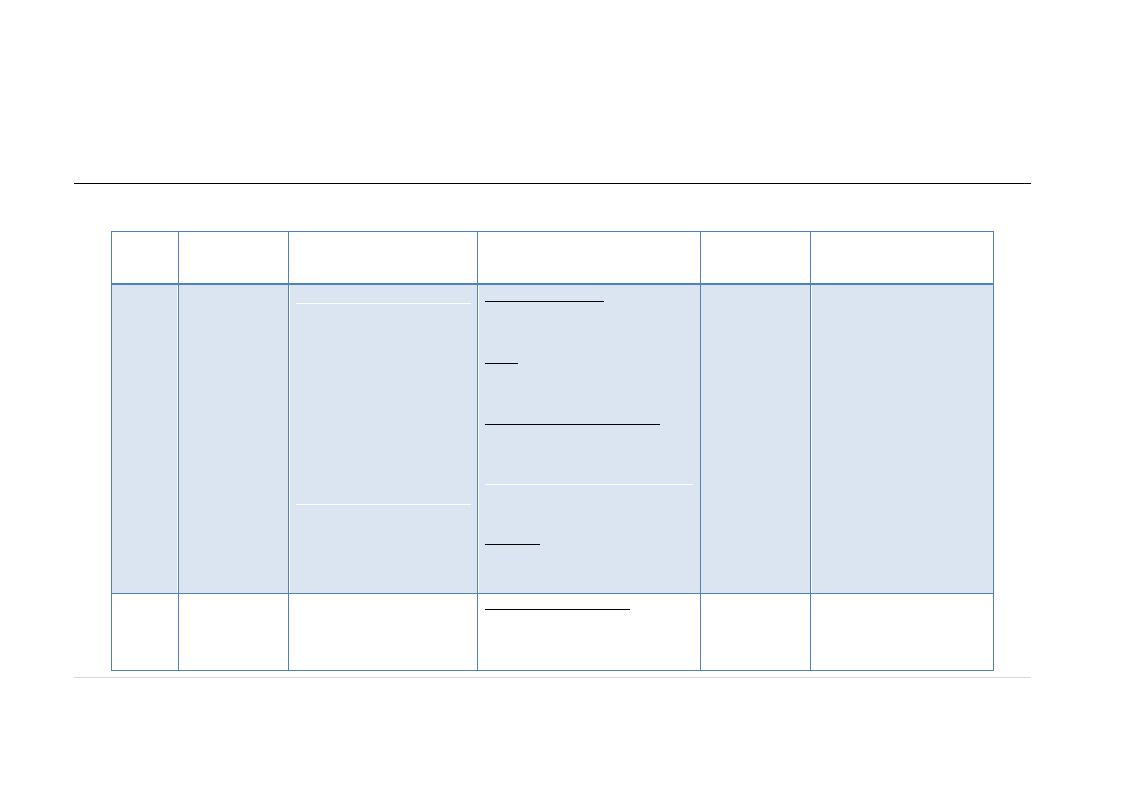
Annex 1– Programme Options
DRM Programme Options Summary
No.
Programme
Objectives
Interventions
Outcome
Deliverables
1.
To examine the underlying
Training and Workshops. Government and Stakeholders and
Risk Assessment /
causes of disaster risk and
partners institutions and staffs will be
actors have better Disaster Risk Profile, including
Disaster Risk
inform the design of risk
trained on data collection tools and
information system an analysis of specific gendered
Profiles
reduction programmes;
methodologies.
to manage disaster risks and vulnerabilities for
To inform the kind of early
warning and response system
that needs to be framed in
Survey. Data collection conducted at
wereda and kebele levels that include sex
and age disaggregated data and
risks and take
timely action in the
event of a disaster.
each wereda
Digital Library for a wereda
different risk contexts; and
information.
To inform a comprehensive
contingency plan at wereda
Data Entry, Analysis, and Validation. Entry
of data into the WDRP database and
Consolidated Overview of
Disaster Risk
level.
analysis. GIS-based maps will be prepared
To identify specific gender
based risks and vulnerabilities
to inform risk reduction
programmes
and included in the development of the
profile of the weredas. Vertical and
horizontal (wereda, regional, and national
levels) validation and dissemination of
wereda profiles.
Publication. The complete and validated
wereda profiles published through the
digital library and made available through
the Internet.
2.
Information
Management
System
Provide information
management services for the
creation of a strengthened
early warning system and a
Strengthening of connectivity.
Strengthening of both vertical and
horizontal connectivity between various
level of governments and its partners;
Enhanced
information
systems, improved
information use
and exchange to
Early Warning and Information
Systems
46 | P a g e
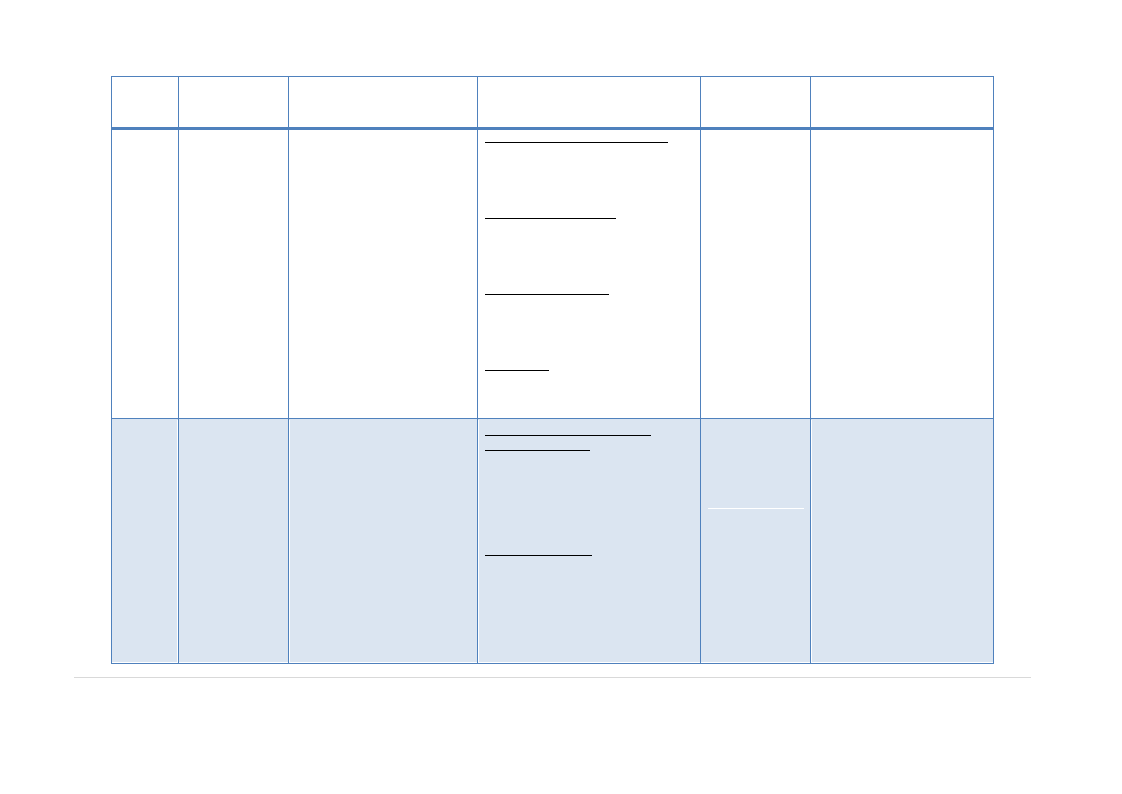
No.
Programme
3.
Community
Disaster Risk
Management
Objectives
Interventions
Outcome
Deliverables
number of further required
information systems
Improve connectivity and
communication with regional
and sub-regional DRM and
food security structures;
Strengthen and consolidate
existing IT resources and
personnel’s skills developed
within the DRM, ensuring
sustainability of current and
future achievements; and
Advancing automation of
operations within DRM.
To ensure community ownership of
disaster risk reduction initiatives.
Software and database development.
Improve DRR information analysis
capacity through the creation of software
and databases and by emphasizing geo-
spatial information systems;
Information dissemination. Improve DRR
information dissemination through the
development of systems that are user-
friendly, interactive, dynamic, but also
centralized;
Stakeholder engagement. Engage with
providers and beneficiaries of the various
DRR activities, so that services delivered
by the Information Management Support
Unit are demand-driven;
Staff training. Heavily investing in
selection and training of local staff, in
view of ensuring long term sustainability
of all IT related functions.
Community Participatory Risk and
Vulnerability Analysis. With available data
from the WDRP, risk and vulnerability
analysis would be conducted while
ensuring that women’s and other
vulnerable groups’ are consulted and their
risks and vulnerabilities adequately
analysed and documented.
Community Education. Making
communities aware of the nature of
hazards and their potential for causing
disasters, and understanding all aspects of
disaster management, including
information on contextual vulnerabilities
to those hazards for specific groups such
as women and other vulnerable groups.
support the
expanded
information needs
on DRM.
Information Dissemination
System
Digital Library
Data Mapping Facility
3W Database
General Support to Information
Management in the DRM Sector
Revitalization and
up scaling of
existing community
managed disaster
risk management
initiatives.
Risk and vulnerability analysis
led and undertaken by
vulnerable communities;
Functioning community early
warning system;
Community risk reduction and
climate adaptation
program/community
development plans;
Community contingency and
recovery plan; and
Comprehensive community
education on DRM
47 | P a g e
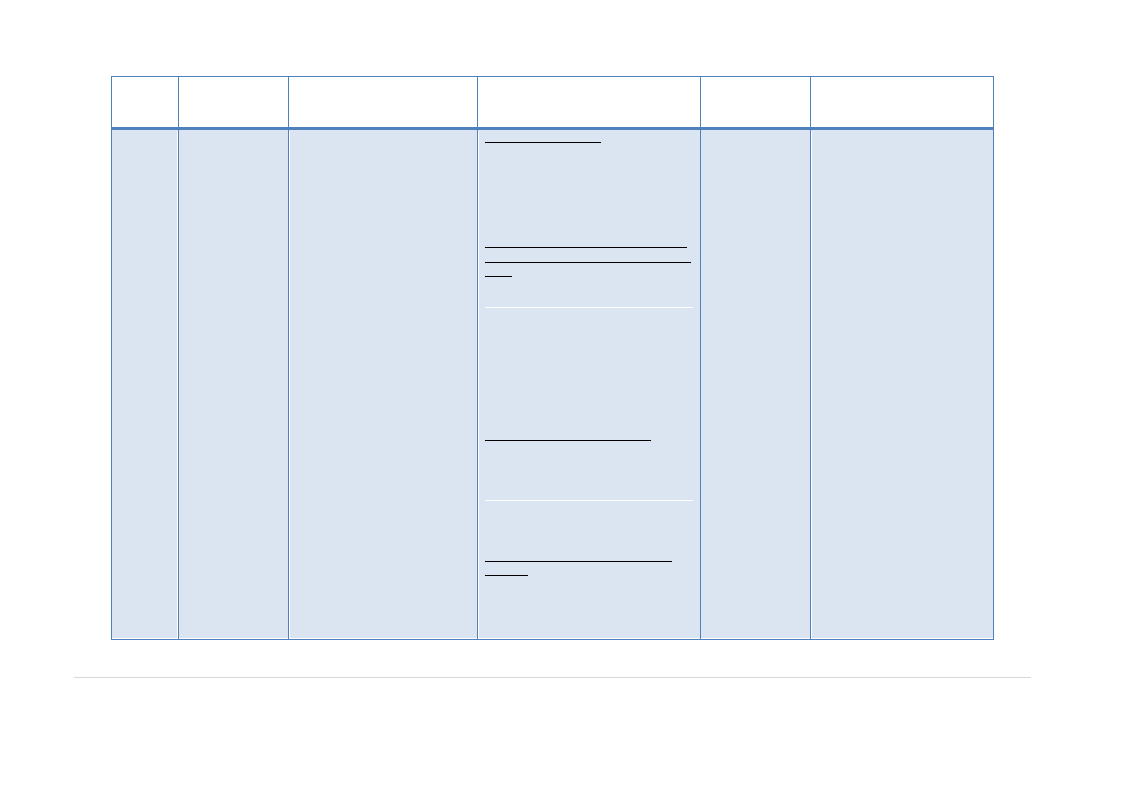
No.
Programme
Objectives
Interventions
Community Networking. Communities and
community institutions such as youth and
women’s associations organized to build a
common platform and pursue a common
program and aspirations on DRM linked
with local, regional, and federal level DRM
institutions.
Community Mitigation Programming and
Implementation/Community development
plans. Community-based disaster
mitigation and climate adaptation
programs based on innovations, local
knowledge, coping capacities and
practice, while ensuring active
participation and contribution of men,
women, girls and boys is linked to the
overall development of their community
and provide the integration between DRR
mitigation and Climate Change adaptation
measures.
Community Early Warning System. A
community managed process of
monitoring specific hazards and of
communicating the nature and magnitude
of the said danger/s through a system of
alert/warning that is understood by
everyone, in particular women and other
vulnerable groups will be promoted.
Community Contingency and Recovery
Planning. Communities will be assisted in
the development of their respective
community contingency and recovery
plans while ensuring that women and girls
adequately participate.
Outcome
Deliverables
48 | P a g e

No.
Programme
4.
DRR Programmes
5.
Climate Change
Adaptation and
Disaster Risk
Objectives
Build up and sustain resilient
capacities of vulnerable
communities through diversified
livelihood opportunities, natural
resources management and
environment protection.
Ensure climate change adoption
policies and development plans
Interventions
Outcome
Deliverables
Informed DRR Programmes: It will be
ensured that the WDRPs and other
available risk databases including active
engagement of community institutions
form the basis of decisions regarding type
of activities to be undertaken and
geographical areas and populations to be
targeted.
More informed
DRR programmes
resulting in
mitigation of
disaster risks.
Well-informed and harmonised
DRR programmes implemented
Resources available from
government for agreed DRR
programmes
Programme Implementation: The
government will ensure that adequate
resources (financial, technical and human)
are available to implement all decided
programmes. To the extent possible, all
resources will be drawn from the
government sources.
Documentation of Lessons Learnt: Efforts
will be made to document best practices
stories, lessons learnt and publish regular
advocacy materials for an enhanced
visibility of such programmes and also
mainstreaming DRR issues in public
forums.
Regular Monitoring and Evaluations: All
implemented programmes will be
monitored regularly and evaluated for
results periodically to assess their success
and document lessons learnt to improve
the programmes further.
Availability of Appropriate Climate Data.
In collaboration with the national and
international technical institutes, DRMFSS
Integration of DRM
knowledge and
capacities in efforts
Downscaled climate data based
on livelihood zones are available
via the DRMFSS database.
49 | P a g e
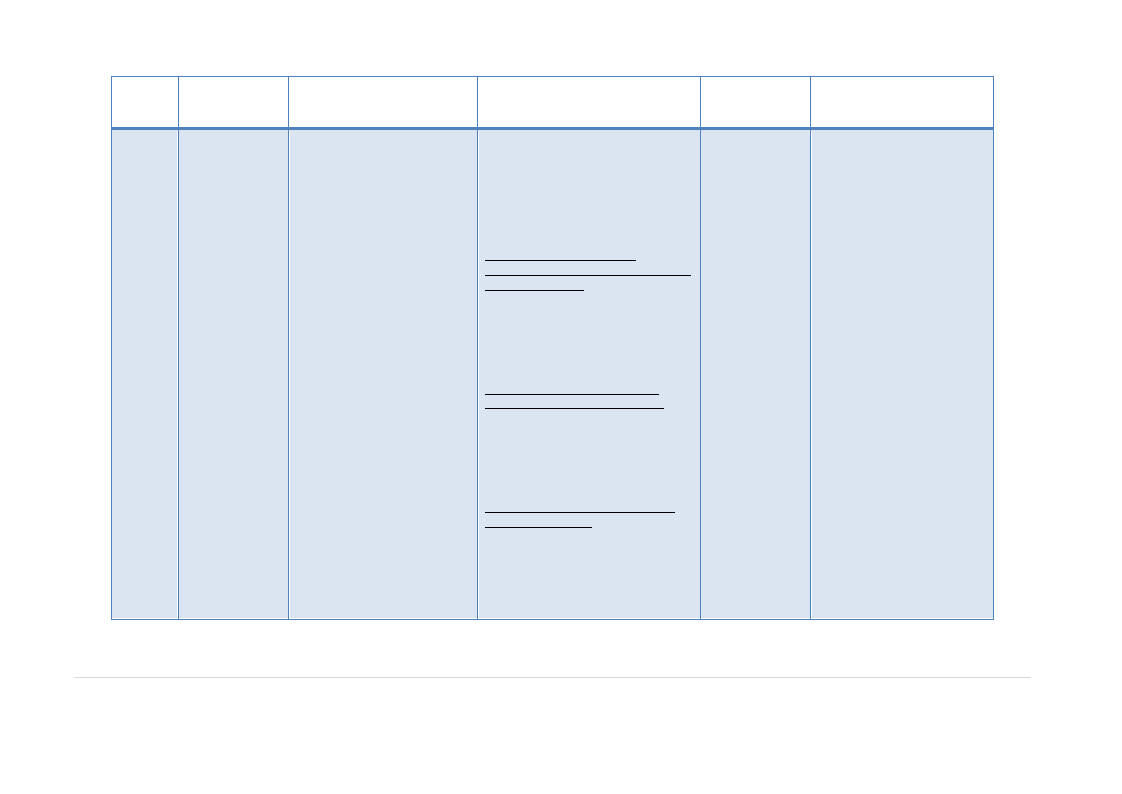
No.
Programme
Objectives
Interventions
Outcome
Deliverables
Reduction
Integration
and interventions capture DRR and
vice versa
will make more specific and appropriate
climate projections and seasonal forecasts
available to regional and wereda bureaus.
These projections are also integrated into
the WDRP database to provide
comprehensive data for risk reduction and
adaptation planning.
to mainstream
climate change
undertaken by the
EPA
Analysis of risk data to support
development of CCA Sector Action Plans in
other Line Ministries. Ensure that DRMFSS
datasets like WDRP, LIU etc. are taken into
account by Line Ministries and Regional
Bureaus when they develop their Sector
Action Plans for Climate Change
Adaptation.
Enhanced harmonization
between EPA and DRMFSS
Specific analysis of risk profile
data to inform sector action
planning processes on climate
change adaptation
Training materials on using
available risk information in
development planning are
developed and disseminated to
line ministries and regions
Capacity Development for CCA/DRR
Integration in Development Planning. It
will be ensured that the training and
awareness programme on integrating
disaster risk and climate change into
development planning (led by EPA) is
conducted in liaison with DRMFSS.
Incorporation of CC considerations into
mainstreaming plans. The outcomes of
the information generated above should
result in the alignment of mainstreaming
initiatives between EPA and DRMFSS and
to ensure efficiency in the efforts made by
Sector Line Ministries.
50 | P a g e
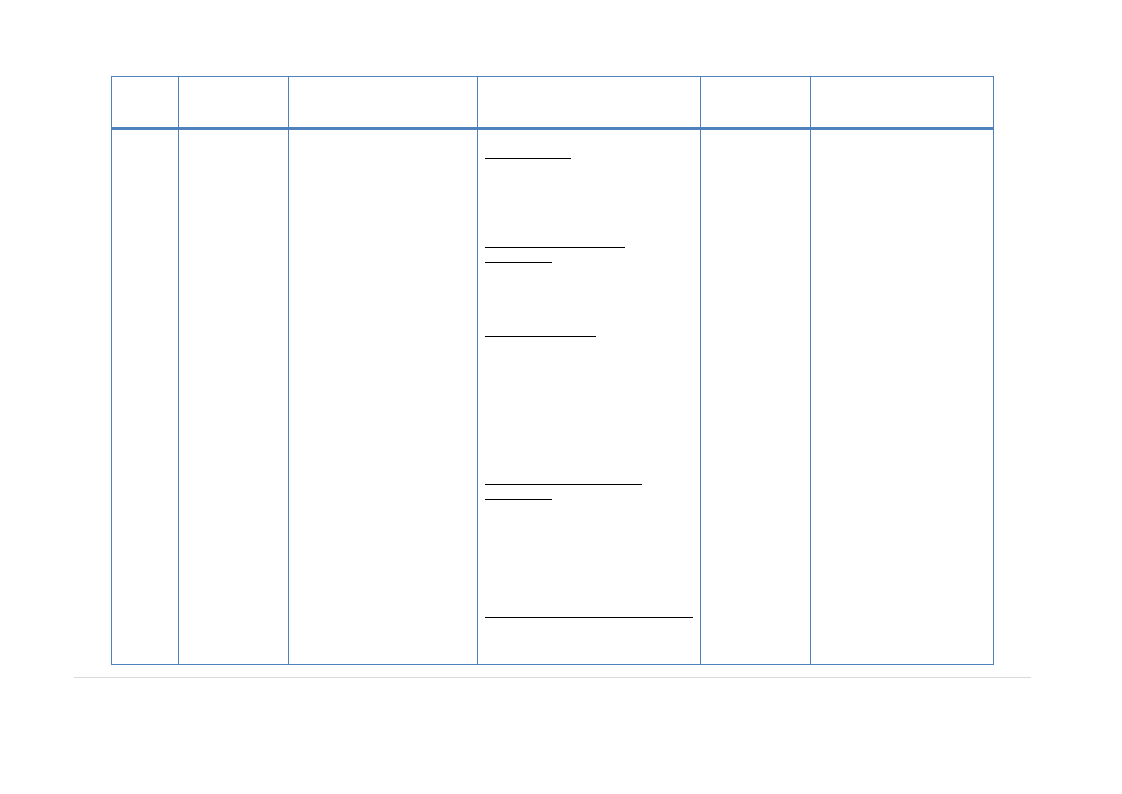
No.
Programme
6.
Early Warning
System
Objectives
Interventions
Outcome
Deliverables
Establish a systematic and
standardized process to collect,
analyse and share data, maps
and trends on hazards and
vulnerabilities and relate these
to the livelihoods of affected
populations
Establish an effective hazard
monitoring and warning service
with a sound scientific and
technological basis and utilizing
local technologies
Develop Wereda Net-based
communication and
dissemination systems to
ensure people and communities
are warned in advance of
impending natural hazard
events.
Capacity-Building. Streamlined training
and capacity development of relevant
staffs at various levels will be done on
EWS data collection, including that for
LEAP software, and analysis.
Database Establishment and
Management. Baseline and databases at
regional and federal levels will be kept
and linked with each other for easy
accessibility.
LEAP Software Update. A number of LEAP
software updates will be produced
including refinement and verification of
LEAP outputs using retrospective analysis
and forecast for belg 2011; finalization of
LEAP-LIAS integration; development of
pastoral index (possibly combined with
LEWS outputs); develop flood index;
integrate climate change model.
Federal, regional
and wereda level
capacity for early
warning system
linked to the WDRP
and vigilance to
eminent
risk/disaster is
efficient, sound
and timely.
Strengthening of meteorological
infrastructure. Setup of automated
weather stations; install Geonet Cast
satellite data receiver and related server
at DRMFSS and NMA; installation of
automated hydrological telemetry along
the Awash river are some notable
interventions.
Multi-hazard and ad hoc analysis team.
The EWS will establish a small, dedicated
multi-hazard analysis team within the
DRMFSS: This team will continuously
Training on EWS from federal
to wereda levels on
transmitting information;
Roll-out of EWS reporting and
database;
Maintenance/Updating of EWS
database and mapping
capacity;
Creation of statistical routines
for analysis of WDRP and EW
data;
Integration of LEAP-HEA-EW;
Establishment of EWS alert/
warning communication
network;
Production and dissemination
of EWS monthly and fortnight
bulletins;
Support to community-based
early warning system;
Integration with contingency
finance and planning to
perform “trigger” function; and
Integration with traditional
response mechanisms.
Extensions of LEAP software
released: pastoralist index,
flood forecast, climate change
integration, HEA integration,
LEWS and Geonet Cast data
integration
Setup and installation of Hydro-
meteorological infrastructures:
51 | P a g e

No.
Programme
7.
Contingency
Planning
Objectives
Design effective,
comprehensive, gender
responsive and decentralised
response plans for major
hazards based on the WDRP;
Interventions
Outcome
Deliverables
collect and analysis the information from
the different available EW tools and
disseminate its findings. Furthermore, the
creation of ad-hoc multi-agency team will
be considered for major hazards such as
droughts. Such ad-hoc teams will focus on
one hazard and report to senior policy
makers updated scenarios and prioritized
DRR and response plans.
EWS Analysis. Multi-hazard analysis
combining information from the EW
checklists’ dataset, baseline information
from the WDRPs, LIAS database, and agro-
economic forecasts based on LEAP
outputs will be done.
Alert and Communication Systems.
Regular bulletins, a re-designed website
complemented with an effective alert
system will ensure EW analysis and
information reaches the whole
community of DRM actors in the country.
Food markets monitoring. The DRMFSS
will perform continuous food markets
monitoring after the development of
guidelines and conduct of trainings on
market analysis and will disseminate all
relevant information to stakeholders.
automated weather stations
and , hydrological telemetry
Setup and installation of Low
Cost GEONETCAST
Infrastructures and application
of toolbox for DRM
Manual Development. Development of a
comprehensive contingency planning
manual.
Enhanced
preparedness of
actors at federal,
regional, wereda
Trainings of federal, regional
and wereda level staff;
Manual on Contingency
Planning for Ethiopia; and
52 | P a g e
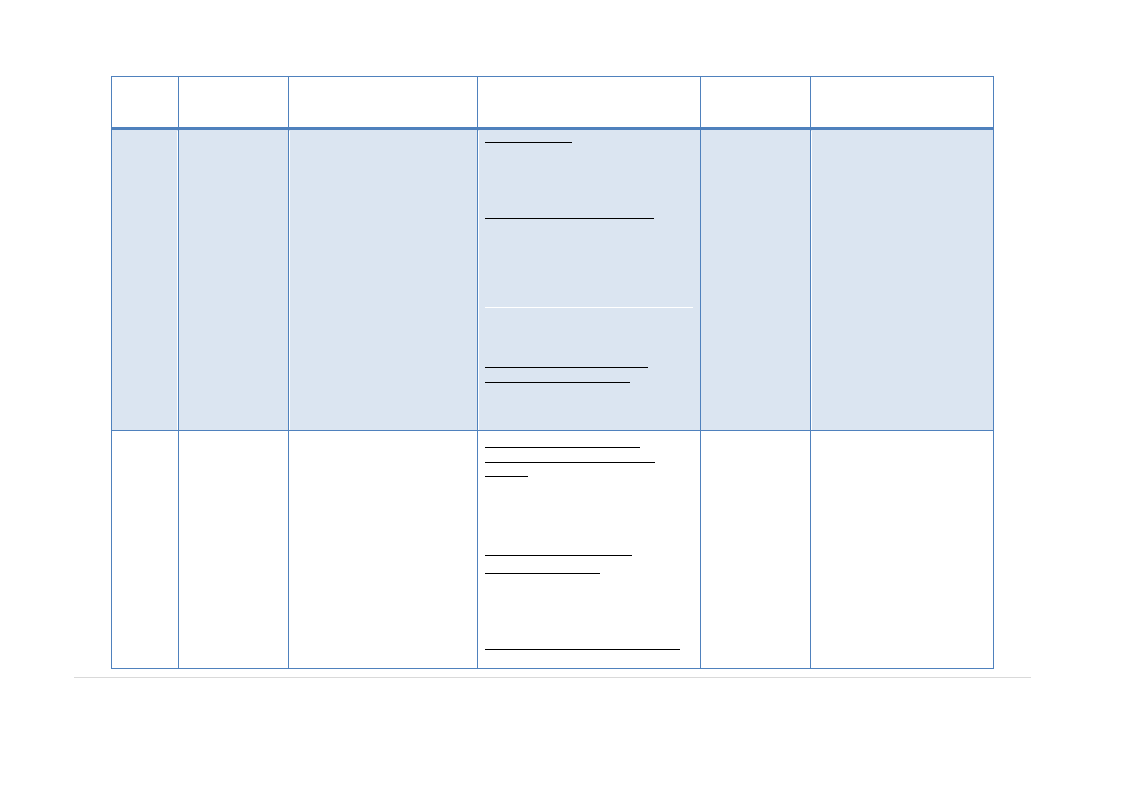
No.
Programme
Objectives
Interventions
Outcome
Deliverables
Create conditions for effective
coordination and collective
action in response to both
occurring and impending
emergencies;
Capacity-Building. Based on the manual,
an extensive training program will be
undertaken targeting first federal and
regional officials and subsequently
cascaded to the weredas.
and sub-wereda
level against
impending
disasters.
Wereda level and regional level
multi-hazard and multi-
stakeholders contingency plans
Build and strengthen
preparedness capacity at all
levels; and
Build upon existing early
warning and contingency
planning initiatives promoting a
shared culture of preparedness
among institutions and
communities.
Development of Contingency Plans.
Application of the contingency planning
manual to produce multi-hazard,
comprehensive contingency plans using
information from the WDRP, EWS, and
other sources, establish “triggers” to be
monitored and design response systems
which take into considerations
communities’ vulnerabilities and
capacities.
Database Development, Resource
Mapping, and Pre-Positioning. Maintain a
database of existing up-to-date plans and
map available resources that can be
tapped in the event of a disaster.
8. Contingency Fund
Review of existing practices and
Establish financial mechanism
arrangements and other countries’
Steady stream of Concept note and
ensuring adequate, timely
practices. Existing funds and
timely and
implementation manual on
funding is available for the
arrangements like the NDPPF, HRF, RF,
adequate financial
reformed funding mechanism
implementation of contingency etc., together with practices in other
support enabling
produced;
and recovery plans at wereda, countries, will be reviewed.
implementation of
regional and national level;
contingent and
New fund established, including
Design incentives to avoid over
spending and poor utilization of
funds.
1. Disaster and Recovery Fund
Stakeholder workshops. A series of
stakeholders’ workshops will be organized
to detail users’ and providers’ needs in the
design of the reformed funding
mechanism.
planned DRM
interventions along
all phases of the
DRM cycle and
with the funding
mechanisms
established to
setting up of all specified
committees and components;
Bi-annual resource allocation
reports produced and
circulated;
Development of implementation manual. enable the scaling
A concept note and an implementation
up of support.
53 | P a g e
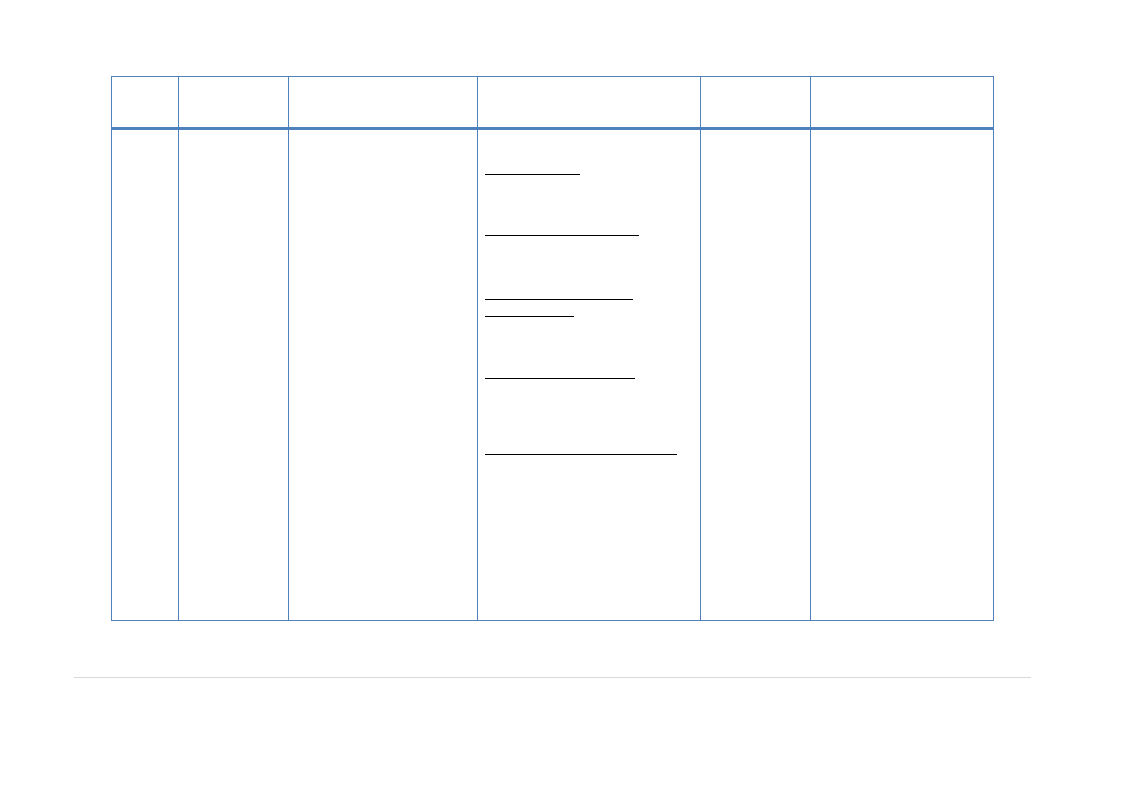
No.
Programme
Objectives
Interventions
Outcome
Deliverables
manual on the reformed funding
mechanism.
Fund establishment. Once the concept
note and implementation manual have
passed the stage of final revision, the fund
will be established.
Major fund review after 2 years. A major
review of the fund’s operation will be
undertaken after 2 years of operations.
Over-spending and
poor utilization will
be discouraged
through extensive
monitoring and
performance based
incentives.
Review document produced
after stakeholder workshop;
Cost-benefit analysis document
on national insurance;
Government-donors workshop
report.
2. National Insurance Program
Cost-benefit study. A cost-benefit analysis
exercise will be carried out to explore the
feasibility of a national insurance
program.
Government-donors workshop. If the cost-
benefit study revels potential gains in
buying a national insurance programme, a
large consultative workshop will be
organizing, to incorporate donors’ views.
Extension of disaster and recovery fund. In
case the cost-benefit analysis and
stakeholder workshop have a positive
outcome, the emergency/contingency
fund will be augmented by a separate pot
where donors and government can
contribute money to pay for the premium
on the insurance product. Donors will
then be able to commit a predictable and
stable flow of funding, while decreasing
contributions to the contingency part of
the fund.
54 | P a g e

No.
Programme
Objectives
Interventions
Outcome
Deliverables
9.
Procurement of food (including non- DRMFSS and other
Food and Non-
To establish and maintain food
Food Management and non-food reserves in
grain food) and non-food items order implementing
to build up the reserve
partners will be
Effective and trust worthy
humanitarian food and non-
System
different strategic locations
across the country for
Make arrangements for electricity
installation in the new warehouses.
able to acquire
capacities for good
food items management
system will be developed in
emergencies, market
stabilization and export.
To design and develop
commodity tracking system by
strengthening national &
regional capacities for effective
implementation of food and non-
food movements
Hiring of consultant Civil
Engineer/advisory institution
Construction of warehouses, silos,
cold stores and other storage facilities
for food and non-food items
Procurements of warehouse
equipment
Enhancing transportation capacity
through purchase of additional
vehicles
commodity
tracking system,
and contingency
food and non-food
reserves
the country.
warehouse with electricity
installed
new warehouses constructed
new silos constructed
new cold stores and other
Develop a database for commodity
storage facilities constructed
tracking
new additional vehicles
secured
10.
Rapid Assessment
System
To provide early warning and
assessment information in case of
fast-onset hazards and disasters
which exceed the Early Warning
System capacity for analysis
Development/Revision of assessment
guidelines. Gender sensitive Assessment
guidelines and methodologies for various
sectors will be produced or revised if
existent to enhance the collection and
analysis of sex and age disaggregated data
and information.
Training on assessment guidelines. A
series of trainings will be conducted for
DRMFSS staff and staff of other relevant
organizations.(male and female staff)
Extended early
warning system
capable of
mobilizing
appropriate human
and financial
resources to assess
hazards and
disasters of
particular
magnitude or
special features.
Gender responsive Assessment
guidelines produced
Training on assessment
guidelines produced and
training report produced
TOR of DRMTWG amended to
include role of Assessment
Missions
Introduction of rapid assessment in TOR of
DRMTWG. The TOR of the DRMTWG will
55 | P a g e
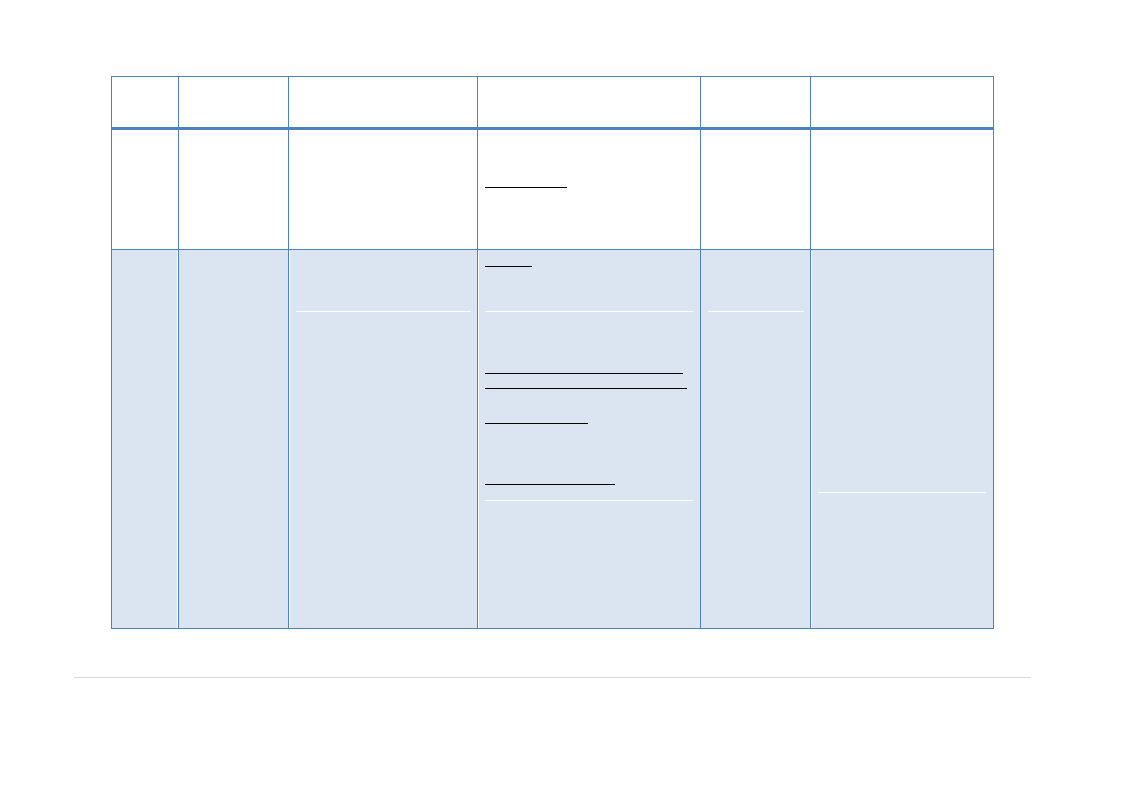
No.
Programme
Objectives
11.
Emergency
Response
To address humanitarian needs
emerging from manmade and
natural disasters and effectively
avert the risk of loss of life,
livelihoods of affected
population, alleviate suffering
and restore dignity
To build required capacity at all
levels, enhancing the speed,
quality and effectiveness of
emergency response
To facilitate effective response
through close monitoring, and
timely identification of needs
and continued gap analysis;
Interventions
Outcome
Deliverables
be reviewed to include the power to call a
rapid assessment mission.
Support to ENCU. The ENCU within
DRMFSS will be strengthened and
supported to keep coordinating
specialized nutrition assessments.
Response. Comprehensive & effective
food and non-food emergency supplies,
while ensuring the special needs of
women and girls are included, for disaster
affected population in accordance with
the emergency plan and guidelines
Operational or emergency response plan
based on pre-developed contingency plan
Information systems. Information and
communication management systems in
place to facilitate informed decision
making and manage media relations
Multi-agency coordination. Multi-agency
coordination structure including MAC,
relevant sector task forces and EOC at all
levels. This will facilitate effective
response and avoid overlaps.
Coordinated and
enhanced
humanitarian
response
operational
mechanisms and
interventions
within government
structures and
among partners
taking part in relief
response
Improved inter-
agency
coordination at all
levels
Enhanced strategic
partnerships and
effective
networking
government and aid
partners
Reduced or alleviate suffering
mortalities, casualties,
livelihood, asset losses and
human dignity from disasters
Improved sectoral humanitarian
response in addressing the
needs of affected population
Minimize duplications and
overlaps
Improve sectoral accountability
with clear reporting lines
Increased joint planning and
response (needs identification,
coordination and gap analysis )
Rapid assessment reports
Operational/Response plan
MOU with partners
56 | P a g e
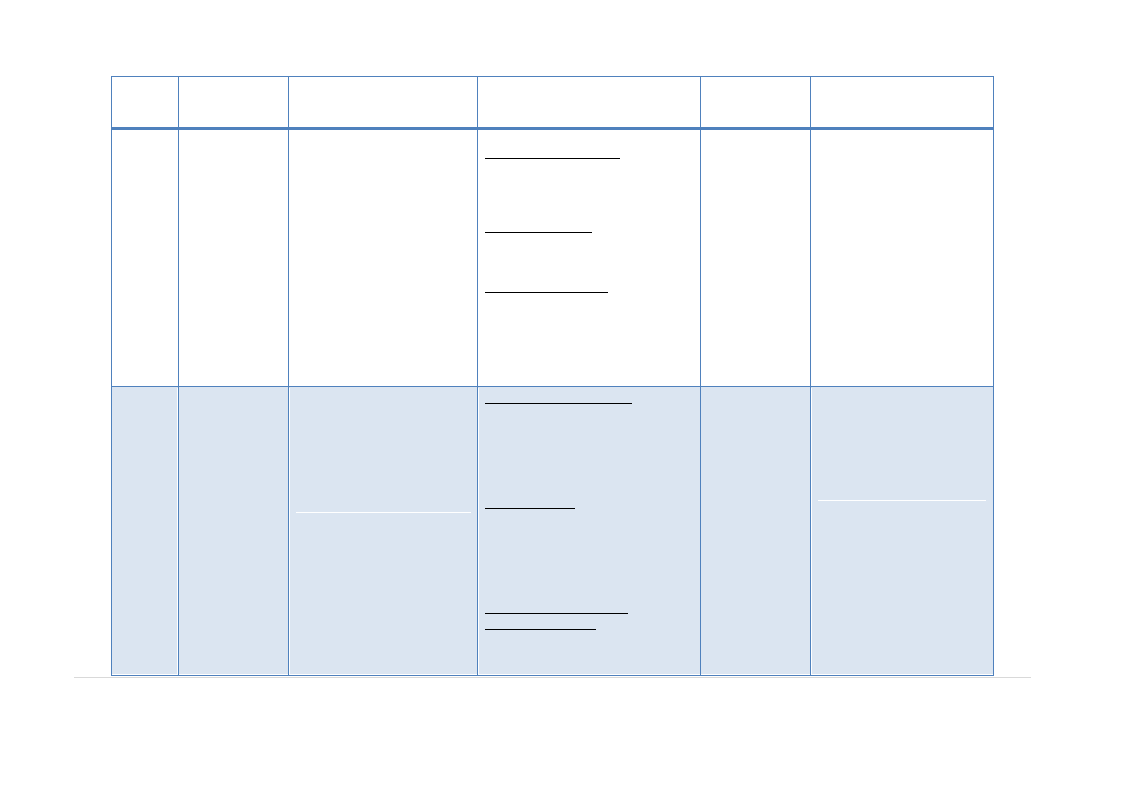
No.
Programme
Objectives
Interventions
Outcome
Deliverables
12.
Post-Disaster
Needs Assessment
13.
Recovery
To identify the magnitude and
extent of damage, loss, and
recovery needs caused by disaster
Bridge the gap between immediate
relief and longer term recovery and
development with an integrated
and coordinated approach which
complements humanitarian actions
and reinforces development
activities
To stabilise a situation, prevent
further deterioration in national
capacity, and reduce the gap
between humanitarian and full
recovery programmes.
Guidelines development: Guidelines
appropriately adapted to the Ethiopian
context and expanded to include
rehabilitative needs, will be developed.
Assessment training: Multi-disciplinary
teams will be formed and trained to
conduct the assessments.
Reports on PDNA needs. The teams will
produce PDNA needs assessment reports
to inform decision making, set priorities for
interventions, suggest coordination
measures among relevant actors and
identify channels to mobilize the required
resources.
Institutional Capacity-Building. Federal,
regional and wereda government
institutions capacity in post-disaster/crisis
governance will be strengthened and local
community structures coping strategies
and systems for community security and
social cohesion promoted.
Recovery Planning: Recovery guidelines
for the development of community
contingency and recovery plans. Working
with all sectors to plan and implement
recovery interventions within the context
of the specific sectoral areas of work.
Network of recovery focal points
Return, Resettlement, and/or
Reintegration Support: Support towards
the return process and other durable
solutions through recovery interventions
that deliver a quick coping mechanism
Accurate
determination of
the damage, loss,
early recovery, and
rehabilitative
needs and allow
communities to
“build back better”.
PDNA needs assessment
guidelines developed
Highly capable multi-
disciplinary and multi sectoral
assessment team formed and
maintained
PDNA needs report produced
and disseminated.
Enhancement of
community
resilience to shocks
leading to food
security and
sustainable
livelihoods.
Ensure restoration
of basic services,
livelihoods, shelter,
governance,
security and rule of
law, environment
and social
dimensions,
including the
reintegration of
Recovery assessment
guidelines and tools developed
and available
Recovery planning guidelines
and templates developed
Trainings for federal, regional,
and wereda institutions on
recovery planning and
coordination
Strengthened community
governance structures or
recovery planning and
programme implementation
Watershed management, flood
mitigation measures promoted
Return, resettlement planning
and implementation capacity
insured
57 | P a g e

No.
Programme
Objectives
14.
Rehabilitation
To restore socio – economic
infrastructure and hence
livelihoods as well as the
psychosocial aspects of the
affected communities.
Interventions
Outcome
and rebuilding of livelihoods and
household assets.
Skill acquisition. Promote skill acquisition
and transfer for livelihood diversification
and asset building (on farm, non-
agricultural)
Agriculture recovery. Provision of seeds,
vet drugs and other inputs to restore
production
Restore water supply. Undertake surveys
on water supply situations in disaster
affected areas and identify
rehabilitation needs and post construction
community management systems
Productive assets rehabilitation. Protect
and rehabilitate productive assets (fodder
banks, veterinary posts, natural resources,
seed banks).
Environment protection mainstreaming.
Mainstreaming environment protection
and ecosystem approaches into
emergency response and recovery
planning.
Community based recovery system.
Promote community based recovery
system.
displaced
populations
Deliverables
Return, resettlement, and/or
reintegration of affected
population and communities
supported
Restored and strengthened
basic social service delivery in
affected areas; and strengthen
social services in host
communities. Rebuilt and
strengthen or established
community infrastructure and
livelihoods.
Guidelines development: The guidelines
will be developed and used for
rehabilitation management.
Training/sensitization workshop: Based on
the rehabilitation guidelines, staffs will be
trained in agendas related to
rehabilitation need assessment, planning
Basic services
resume
Rehabilitation management
functioning,
guidelines and tools developed
economic activities
and available
are revived and
persons and
households lives
Priority rehabilitation needs
identified and validated
58 | P a g e

No.
Programme
Objectives
Interventions
Outcome
Deliverables
15.
DRM Coordination
To ensure effective
coordination between the
government, its DRM partners
and civil society in the design
and implementation of DRM;
To increase the momentum of
the current DRM approach by
engaging a wider range of
stakeholders.
To have different forums for
disaster impact prioritization,
critical resource allocation,
communication system
integration, and information
coordination.
and implementation, monitoring and
evaluation.
Rehabilitation plan: Once the specific
rehabilitation needs assessment report is
produced, the next step is the preparation
of the rehabilitation plan that shows the
interventions required to address the
needs of different sectors.
Monitoring & Evaluation: The
implementation of the rehabilitation plan
requires monitoring to be assured
whether activities, the targeted inputs,
and outputs are achieved timely,
effectively and efficiently and also for
corrective actions to be taken. In addition,
the rehabilitation effort should also be
evaluated to ascertain whether the
required change and impact on
communities is realized and the broader
goals are attained.
Incorporate Relevant NIMS components
into DRM system at various levels.
Relevant Components of NIMS such as
MAC, EOC and ICS will be piloted at
Federal and Regional and federal levels.
The existing Multi-agency coordination
will be strengthened and established at
different levels (federal, regional and
wereda level) by integrating the best
practices learnt from USA NIMS. In
addition to these, command posts and
EOCs with minimum requirement will be
established in different disaster prone
areas.
are able to return
to normal.
Rehabilitation plan developed
The capacity of federal,
regional, and weredas and
communities strengthened in
rehabilitation planning,
implementation, and
monitoring
Effective multi-
stakeholder
coordination for
concerted DRM
action; coordinated
prioritization of
projects and
resources; and
effective pooling of
information on
DRM among
stakeholders.
Established MACs, EOC and
ICS at various levels.
Mapping of existing
DRMTWGs and assessment of
their level of activity and
capacity needs;
Establishment of DRMTWGs
at regional and wereda levels,
where such is not in
existence;
Delivery of customized
training and technical
59 | P a g e
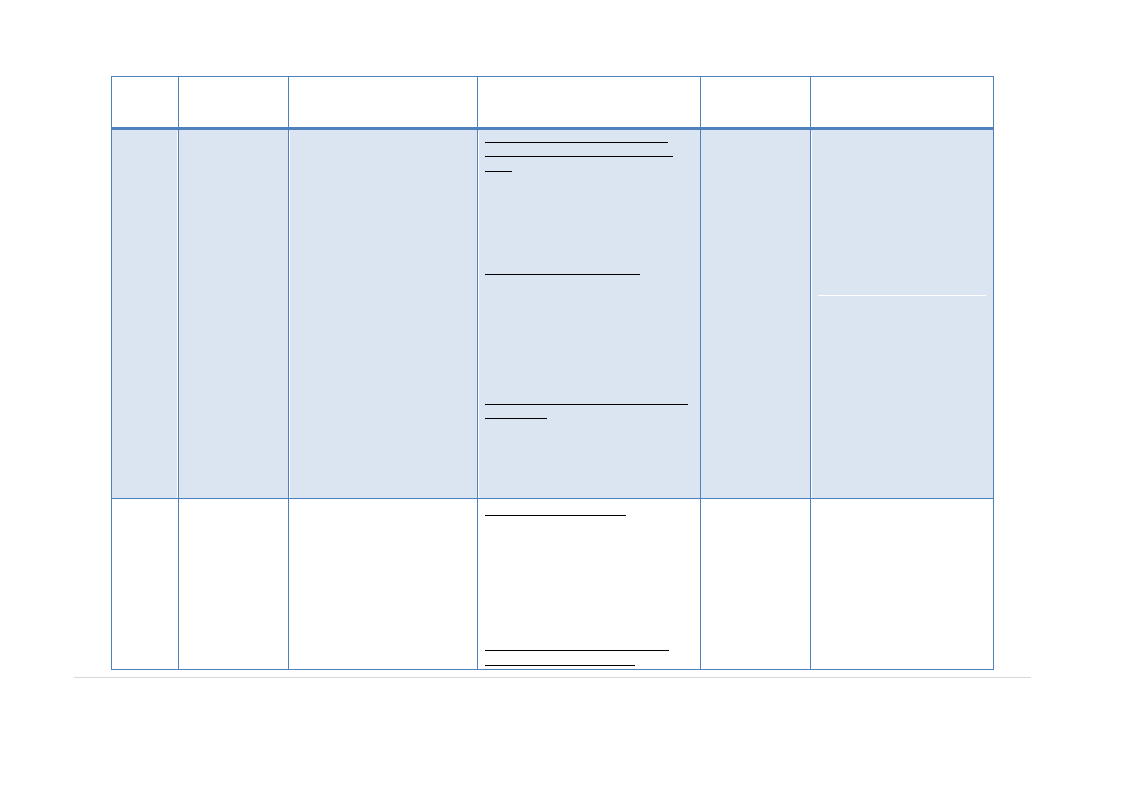
No.
Programme
Objectives
Interventions
Establishment of and support to DRM
TWGs at federal, regional, and wereda
levels. Existing DRM TWGs must be
supported and where such does not exist
at regional and wereda levels, its
establishment should be supported
linking with Government lead Donor
coordination mechanisms.
Capacity-building of DRM TWGs. The DRM
TWGs at regional and wereda levels will
be established, as well as, sector task
forces at federal level, will be
strengthened through the conduct of
orientations and workshops on DRM that
is customized to the needs of the said
institutions.
Linking with Donor-led DRM Coordination
Mechanisms. The Federal DRM TWG will
link with the DRM Sub-Group of RED&FS
to ensure that DRM activities in the
country are well synchronized and
coordinated.
Outcome
Deliverables
support and system to DRM
TWGs and sector task forces;
Quarterly workshops for
sharing of good-practices
among chairs and
secretariats organized at
regional level (for weredas)
and federal level (for
regions);
Annual meeting to look into
the implementation of DRM;
Harmonized coordination
and financing processes that
reinforce
existing
government-led
DRM
structures; and
Better coordinated and flow
of information between the
federal DRM TWG and donor-
led coordination groups like
the RED&FS.
16.
International
Collaborations and
Engagement
Representation in ISDR and
other international fora on
DRM
Engagement with DRM
networks and communities of
practice
Promotion of south-south
cooperation on DRM
International Representation. Ensure
effective representation of the
Government of Ethiopia, through the
DRMFSS, in ISDR, the African Union, and
the UN Economic Commission for Africa.
Such representation will involve
participation in international fora and
events, meetings and activities organised
by the said international bodies.
Engagement with DRM Networks and
Communities of Practice (COP). The
Increased visibility
of the Government
of Ethiopia and its
wider cooperation
with other
governments and
institution in the
international DRM
arena.
Participation of DRMFSS and
highlighting of Ethiopian
progress and achievement on
DRM in international fora,
meetings, and events organised
by ISDR, AU, UN-ECA, IGAD,
RECs, and other international
DRM organizations and
institutions;
Establishment of Ethiopia’s
DRM Policy and Practice forum
60 | P a g e

No.
Programme
17.
Capacity
Development
Objectives
Interventions
Outcome
Deliverables
Ensure enough capacity exists in
government offices at various
administrative levels to support
the implementation of the DRM
framework
Promote efficient use of capacity
Engage academic institutions and
promote their role as major
capacity providers to the DRM
sector
DRMFSS will be supported in its
engagement with DRM networks and COP
though the sponsoring of international
experts and counterparts in other
countries to participates in a DRM Policy
and Practice Forum. In-country
representation from the UN and
international NGOs will also be
encouraged to participate in the forum.
South-South Cooperation. Build on the
networks established with other
governments and institutions through the
temporary deployment/cross-posting of
experts to help out in the full
implementation of the new DRM
approach in the country. In the same
manner, Ethiopian experts would be
cross-posted to gain practical knowledge
and skills on DRM from other countries
and complemented by joint study visits
and research on DRM to promote better
south-south learning and cooperation.
Capacity needs assessment. Federal
institutions involved in the DRM
framework and regional DPPBs
Institutional will carry out organizational
capacity needs assessments.
DRM higher education. MoUs can be
signed and dialogue can be established
between academic institutions working on
DRM and the DRMFSS to strengthen the
links of the academe with the institutional
DRM community and the job market. On
the other hand, DRMFSS will ensure a
Increased
government
capacity fitted to
the needs of the
DRM framework.
with the participation of
international experts,
counterpart from other
governments, and in-country
expertise from the UN and
international NGOs and
institutions;
Exchange of experts with
developing countries
experienced on DRM; and
Joint study visits, research, and
initiatives on DRM with
developing countries, especially
in Africa and Asia.
Capacity needs assessment
document for the federal
DRMFSS and regional, Zonal,
and Wereda DPPBs;
Support to capacity
expansion where requested
by the capacity needs
assessments;
Standardized DRM short
courses prepared and
delivered;
61 | P a g e

No.
Programme
18.
DRM
Mainstreaming
Objectives
To ensure key DRM elements are
integrated across all sectors and
development activities
Interventions
Outcome
Deliverables
growing pool of qualified graduates will be
available in the Country to work in the
expanding DRM sector.
DRM short courses. Standardized and
specialized DRM short courses can be
developed with support from academic
institutions in Ethiopia and abroad.
Scholarship program. Twinning with
academic institutions in Ethiopia and
abroad will also be realized with the aim
of creating scholarship programs for
graduate study (masters, PhDs) in
distinguished institutions.
DRM-related
certification
delivered;
professional
courses
Scholarship program for
graduate studies in DRM
related areas.
Support to the National Meteorological
Agency. Specific support will also be given
for capacity development in the National
Meteorological Agency thru specific
scholarships and short courses to the
study of meteorology, the links between
DRM and meteorology, and climate
change.
Assess key sectors areas of the country.
Sectoral assessments of successful DRM
mainstreaming in public construction,
urban land use planning, water
management and irrigation, including an
analysis of climate change, where
relevant.
Produce and implement operational
guidance on DRM mainstreaming.
Integration of DRM into the development
Government staff
at all levels aware
of the need to
consider disaster
risk in policy,
strategy,
programs, and
plans.
Communities in
disaster prone
Clear assessment documenting
priority sectors for DRM
mainstreaming and key
constraints to its
implementation.
Guidance on mainstreaming
DRM.
Dissemination of guidance
document on DRM
Mainstreaming.
62 | P a g e

No.
Programme
Objectives
19.
DRM Research,
Communication
and Awareness
Raising
To build a culture of safety and
resiliency for men, women, boys
and girls
Interventions
Outcome
Deliverables
policies legislation or mandatory
guidance.
Networking and influencing development
organizations/institutions. This includes
the dissemination of operational guidance
document/s to all relevant development
actors, ensuring relevant task forces
conduct trainings for members on the
operational guidance documents, and
ensuring that risk analysis and
implementation of the operational
guidance document is established as a
criteria for all new funded projects.
Integration of DRM in school curricula.
Development and integration of the DRM
module in the elementary and secondary
level curriculum. Specialized DRM
modules will also be developed and
included in tertiary level courses.
areas aware of
the need to
reduce disaster
risk and their
responsibility to
creating disaster
resilient
communities.
Guidance and
legislation on DRR
implemented in
key sectors.
DRM is
integrated in the
school curricula
at elementary,
secondary,
tertiary levels.
Reviewed and amended
guidance documents on DRM
mainstreaming.
Inclusion of DRM on the
national curriculum at primary,
secondary and tertiary levels;
DRM Research. The conduct of research
will be encouraged and funding sourced
and made available. Researches will
Research,
documentation of
best practices,
Communication plan for
DRM;
include the development of
gender specific
Media products in different
methodologies and models to avert future vulnerabilities and
languages suitable for
disasters; knowledge building, innovation risks, enhanced
diffusion on TV, radio,
and education to boost confidence and
sharing of
newspapers, and the
resilience of stakeholders against impact information and
internet;
of disasters.
experiences,
Organisation of annual DRR
increased public
day;
Research will also aim at identifying social, awareness on DRM
economic and cultural issues impacting on concepts, the DRM Organisation of annual DRM
the vulnerabilities of specific community cycle and national
Policy and Practice Forum;
and
63 | P a g e

No.
Programme
Objectives
Interventions
Outcome
Deliverables
groups and their coping capacities to
priorities and
enhance analysis and building resilience. policies;
Organisation of Quarterly
DRM Implementation Forum.
DRM Communication Plan. A
comprehensive DRM communication plan Strengthened
Research papers, publicly
from the federal to kebele levels will be research capacity
available on DRMFSS website,
developed and implemented. The
and a more
on topics of current interest
Communication Plan will serve as the
explicitly demand-
to DRM practitioners in the
roadmap for awareness-raising on DRM in driven orientation
country;
the country and will in particular ensure of research
strategies that reach the most vulnerable programmes for
groups, youth (boys and girls) and women. improved DRM
systems and
Best practices consolidated,
documented
and
communicated to all
Development of DRM Information
Products. Media products (print, radio,
increased
effectiveness. This
stakeholders;
television, and digital/internet) that are
culturally and gender sensitive will be
produced as a tool to raise awareness on
DRM and communicate to communities
(and ensure they target women and
youth) and civil society about DRM
opportunities and achievements. Good
include also
documentation of
best practices in
the areas of
existing
programmes
MoUs with institutions such
as Ministry of Education,
Addis Ababa University
Institute of Journalism, Bahir
Dar University, Haramaya
University and EDRI.
practice documents and lessons learned
that highlight how DRM has been
implemented in different sectors will also
be developed.
Conduct of National Events on DRM. The
celebration of the International Day for
Disaster Reduction will be the main event
underpinning the promotion and
awareness raising of DRM at the national
level. Linked to the commemoration of
the International DRR Day is the conduct
of the DRM Policy and Practice Forum.
64 | P a g e
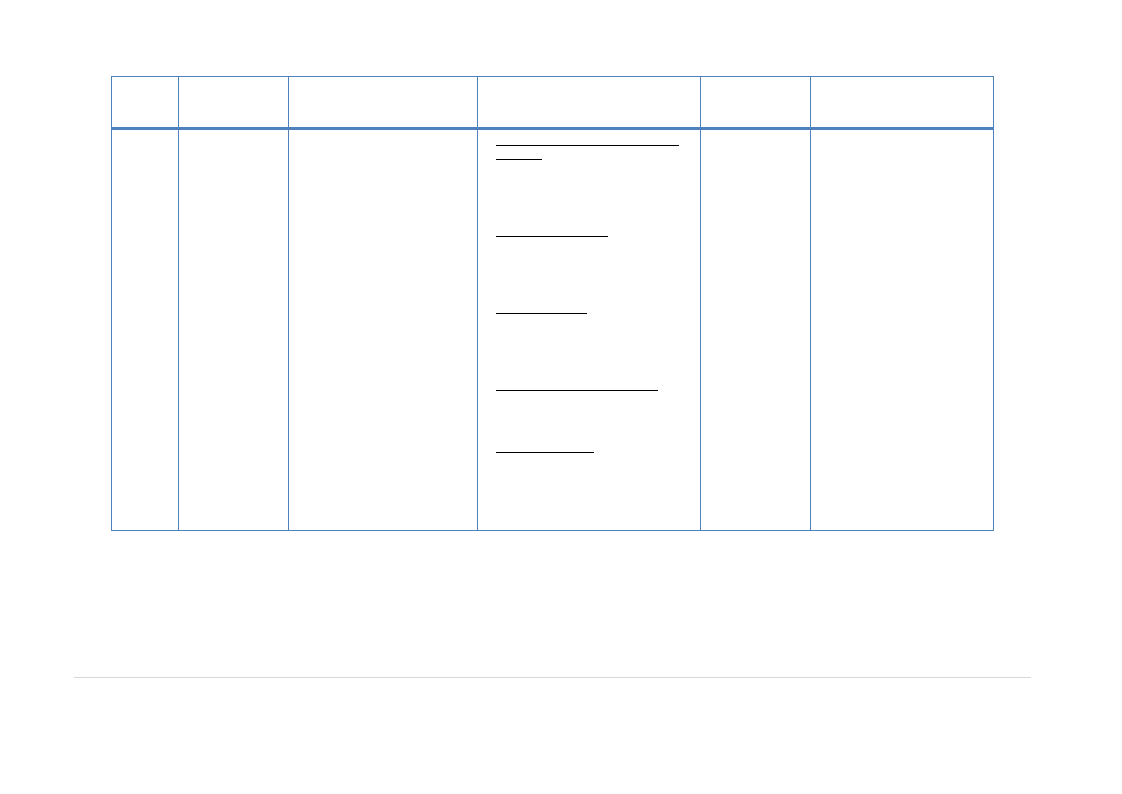
No.
Programme
20. DRM Volunteer
Scheme
Objectives
Interventions
Outcome
Deliverables
To promote the culture of
volunteerism in the field of
Disaster Risk Management
To create a pool of citizens (men
and women) willing to
participate in disaster
management activities
Study on potential for volunteerism in
Ethiopia. A study to assess existing
volunteerism in Ethiopia and potential
for further expansion, especially with
relation to major hazards such as
drought and flood.
Aware citizens
acting as capable Study on DRM volunteerism
human resources in
the field of DRM
National Policy on DRM
Volunteers
DRM-Volunteers Policy: A strategic
gender sensitive policy followed by
standard operating procedures will be
developed together with relevant
actors.
Trained and deployed DRM
volunteers
Online database of DRM
volunteers
Awareness Raising: The identified
volunteers in various parts of the
country will be duly exposed to DRM
issues through workshops and relevant
advocacy materials.
Training and Simulation exercises:
Training on DRM, to include simulation
exercises based on contingency plans,
will be conducted.
Roster maintenance: An online database
of volunteers on rolls will be prepared
to act as a national volunteer
management database resource and
also help tracking volunteers in the
event of a disaster.
65 | P a g e




